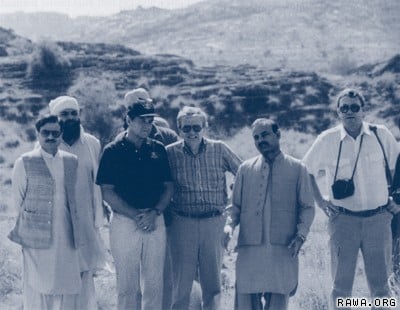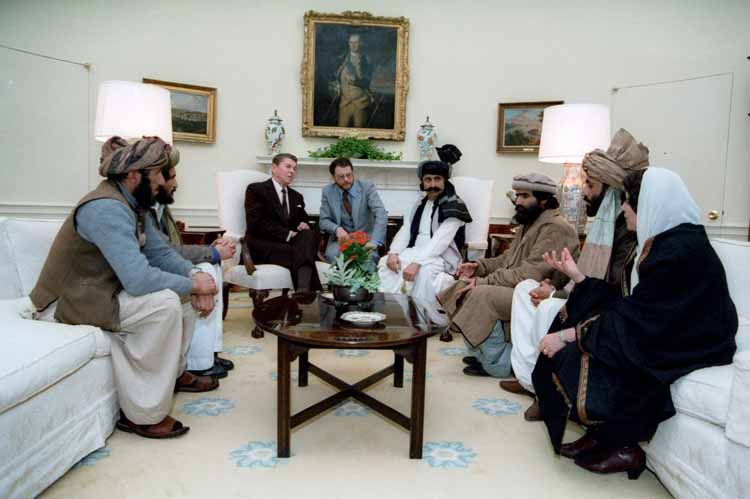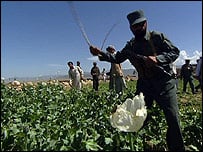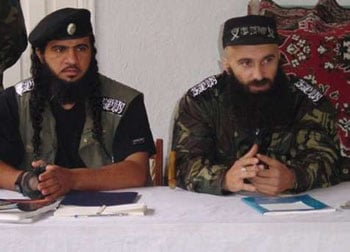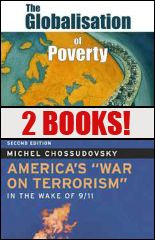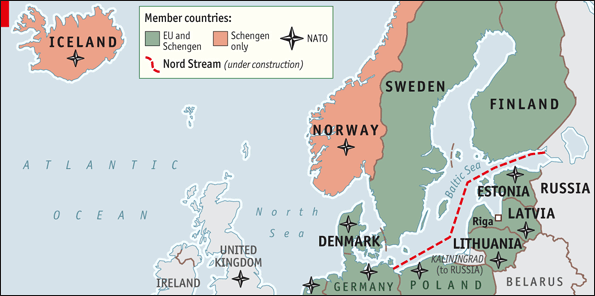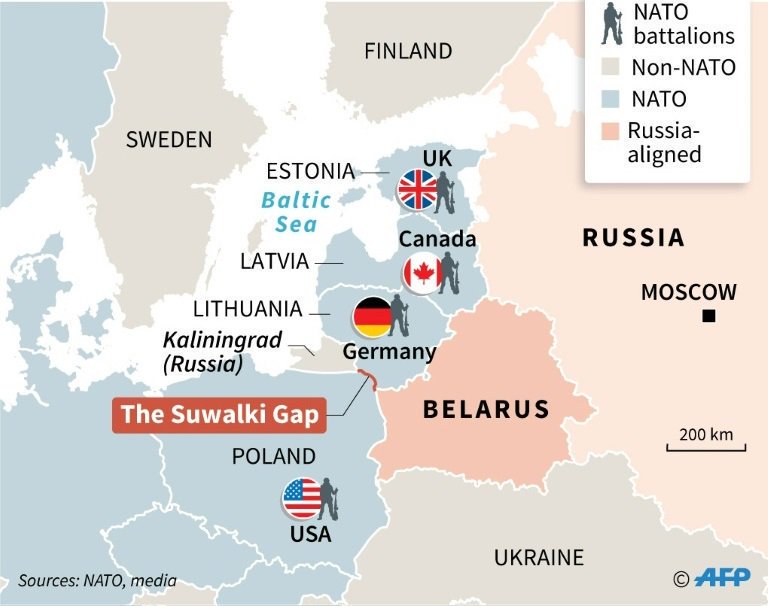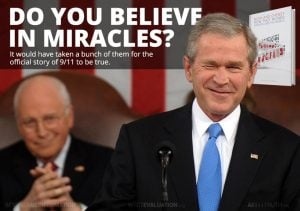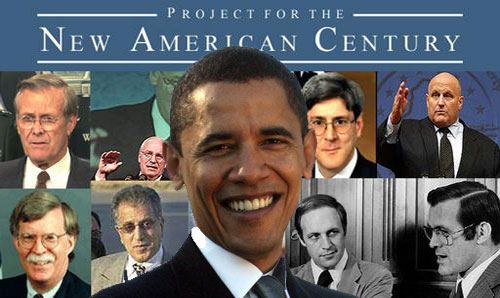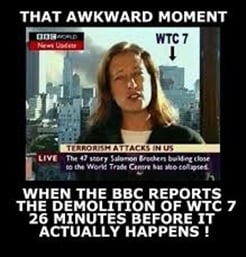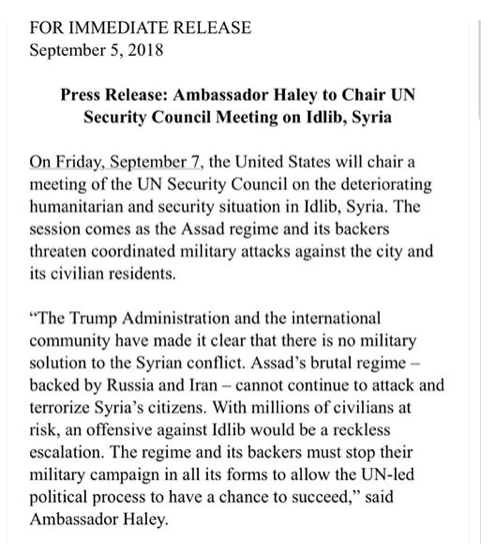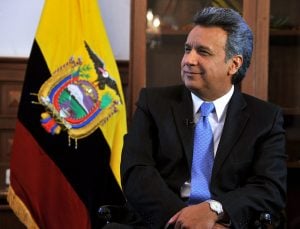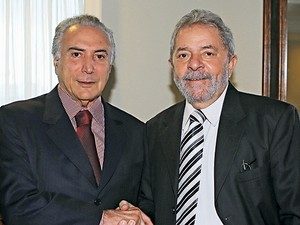Note to readers: please click the share buttons above
We bring to the attention of our readers this outstanding, detailed and incisive analysis by Professor Mason Gaffney of the University of California, Riverside
Abstract
Military defense is generally treated in economics texts as a “public good” because the benefits are presumed to be shared by all citizens. However, defense spending by the United States cannot legitimately be classified as public good, since the primary purpose of those expenditures has been to project power in support of private business interests. Throughout the course of the 20th century, U.S. military spending has been largely devoted to protecting the overseas assets of multinational corporations that are based in the U.S. or allied nations.
Companies extracting oil, mineral ores, timber, and other raw materials are the primary beneficiaries. The U.S. military provides its services by supporting compliant political leaders in developing countries and by punishing or deposing regimes that threaten the interests of U.S.-based corporations. The companies involved in this process generally have invested only a small amount of their own capital. Instead, the value of their overseas assets largely derives from the appreciation of oil and other raw materials in situ. Companies bought resource-rich lands cheaply, as early as the 1930s or 1940s, and then waited for decades to develop them. In order to make a profit on this long-range strategy, they formed cartels to limit global supply and relied on the U.S. military to help them maintain secure title over a period of decades. Those operations have required suppressing democratic impulses in dozens of nations. The global “sprawl” of extractive companies has been the catalyst of U.S. foreign policy for the past century. The U.S. Department of Defense provides a giant subsidy to companies operating overseas, and the cost is borne by the taxpayers of the U.S., not the corporate beneficiaries.
Defining military spending as a “public good” has been a mistake with global ramifications, leading to patriotic support for imperialist behavior.
Introduction
Corporations are heavily involved in the military programs of the United States. 1 (endnote) On the one hand, they build weapons systems for the Pentagon under contract, often with large cost overruns. On the other hand, all American corporations with overseas investments benefit from U.S. military spending. The net effect is that business ties with the military have increased the power of corporations, distorted the political system in the United States in favor of elite interests, encouraged waste of productive potential, and led to the U.S. functioning as the world’s police force. That last effect is part of an expansionist foreign policy that has embroiled the U.S. in military action almost every year of the 20th and 21st centuries (Grimmett 2010:7-30).
On the procurement side, consider only the latest fiasco. The F-35 jet program, built by Lockheed-Martin, is currently scheduled, after seven years of delay, to cost $406.5 billion for procurement and over $1 trillion in lifetime operating and maintenance costs (Capaccio 2017). The project has been the object of ongoing criticism from the U.S. Congress. The F-35 is less combat-ready than its predecessors, but despite its litany of technical problems, the Pentagon has deemed it “too big to fail” (Hughes 2017). This is an exaggerated case of corporate welfare—a situation in which a corporation is able continually to draw upon public revenues for inferior product, all because that corporation has amassed so much political power. Bender, Rosen, and Gould (2014) show how Lockheed Martin is able to influence the political system by the use of strategically located subcontractors dispersed around the U.S. and the world:
One reason why the project has become such a boondoggle is that many states and countries are significantly invested in the plane, relying on its production for income and jobs. Every U.S. state but Alaska, Hawaii, Nebraska, and Wyoming has economic ties to the F-35, with 18 states counting on the project for $100 million or more in economic activity, according to primary contractor Lockheed Martin. All told, the project is supposedly responsible for 32,500 jobs in the U.S. Globally, another nine countries have major ties to the F-35.
This is how corporations function in the world of defense contracts. They create “white elephants” that the government is forced to buy to avoid angering the constituency of key members of Congress.
On the other side of the ledger are the more than $5 trillion in assets held by U.S. corporations in foreign countries (US CIA 2016). The U.S. military devotes a large portion of its resources to protecting those foreign investments, although it defines those assets as “the interests of the United States.” Few people who use that language stop to think that those interests are mostly private, not public. Why should someone who invests in a company with oil-fields in Angola, Kazakhstan, or Sudan receive the protection of U.S. military forces without any charge? Why should American taxpayers pay this cost? Why should young Americans be sent to fight to protect those investments? Why should the U.S. provoke other countries into becoming “endless enemies” to protect private investments (Kwitny 1984)? There is no reason the price of oil could not reflect the true cost of obtaining it. Alternatively, some international body might collect the oil rents so there would be less value worth fighting over. In fact, American taxpayers spent about $50 billion a year in the 1990s to project American power into the Persian Gulf. If that cost had been factored into the price of oil, the true net cost of oil from that region would have reached $100 per barrel by the mid-1990s (Lovins and Lovins 1995).
The question that I seek to answer in this article is how corporations have managed to cloak themselves with patriotism when their assets are at risk in other countries and yet refuse to share the benefits of their activities with the governments that pay for these protection services. This does not mean that the U.S. military spends no money on legitimate security interests. But in a world where corporate interests have become so closely tied to American foreign policy, it is difficult to know precisely where to draw the line.
The Fig Leaf: Defense as a Public Good
The use of military spending in the U.S. to defend private interests has received surprisingly little attention over the years. Economists who question many other aspects of the federal budget seem reticent to turn their skeptical gaze upon the military budget. For many analysts, that spending is sacrosanct. They hesitate to pry open the lid and look inside.

The single biggest factor in the general reluctance to ask who benefits from military spending (and implicitly to ask who should pay for it) is the philosophical premise that defense is a public good. Although the term “public good” is used in casual speech to mean any service that government provides (roads, health, education, and so on), economists have a more specific meaning. A public good is one that is indivisible in production and undiminished by use. It is a service with universal benefits from which it is hard to exclude potential beneficiaries. One standard example is education, but it is only a quasi-public good. It has some properties of a private good, since it permits exclusion and mostly offers direct benefits. Thus, a better example seems to be national defense, which is often presented as a pure public good. If your country is invaded by a foreign power, every citizen benefits from the effort to ward off the attack, which means the benefits are universal and non-excludable. But no foreign army has attacked the U.S. directly since 1941, and even then, the mainland remained secure throughout World War II. Thus, the argument that military spending is a public good does not have the degree of plausibility with which it is usually presented. The argument is even less plausible in countries where the main function of the military is to repress domestic dissent and protect the power of an elite. That describes a high percentage of countries today.
Thinking of defense as a public good runs counter to the historical origin and nature of national governments, including the United States. National governments originated to establish, maintain, legitimize, expand, allocate and police the tenure of land—both inside and beyond their borders. Thus landowners benefit from defense in proportion to the value of their holdings. The public goods argument becomes even more tenuous when military power is used on foreign soil to protect the economic interests of Americans abroad, which largely consist of large and influential corporations. They benefit disproportionately from military outlays.
One aim of military spending by the United States today is to extend sovereignty outside its borders. Since the prior goal of securing the heartland itself has been achieved, a high share of the discretionary or marginal military dollar should be imputed to marginal expansion or territoriality. It goes by names like policing the world, naval patrol, counter-insurgency, technical advice, surveillance, C.I.A., overseas bases, military aid, bringing democracy to the world, or humanitarian intervention.
During the Cold War, it was possible to rationalize military action at the periphery as a strategy to secure the U.S. heartland. President Eisenhower initially justified support for the government of South Vietnam in the 1950s to sustain the raw material base of Japan in Southeast Asia, given the need to maintain an alliance with Japan (Magdoff 1969: 53). Similar arguments were used to justify support for allies in Western Europe against Russian efforts after World War II to lure European countries into their sphere of influence (Ellis 1950). Walt Rostow in 1956 claimed that the economy of the U.S. and its allies was directly at stake if the U.S. did not take action to maintain the allegiance of developing countries (Magdoff 1969: 54). Another argument was that the U.S. military itself required certain raw materials, so access to them had to be protected.
There is a scintilla of truth in those security arguments. Yet a nation that dominates most of the world must be engaged in more than simple “defense.” We threaten others more than they threaten us from any objective, third-party view. In the middle of the Cold War, Edward Mason (1964: 20) wrote,
“The American economy is relatively invulnerable to a curtailment of foreign sources of raw material supply” (Mason 1964: 20).
It may be more vulnerable now, but U.S. gross imports of crude oil—about $80 billion in 2016—are small next to a defense budget of around $600 billion. The argument of needing to protect petroleum supply lines in order to fuel the armed forces is dangerously circular. A nation that acquires surplus resources around the world using gunboat diplomacy is aggressing. A nation whose philosophers preach that its way of life requires continuous expansion is dangerous in a finite world.
Truth is to be found in trade-offs. Official U.S. policy would have us believe that continental or homeland security is the primary end and that protection of offshore resources acquired by American firms is a means. That would mean trading off or sacrificing the interests of U.S. businesses for the security of the American public. Yet, the evidence presented below leads me to believe that U.S. policy makers often act as though expansion of investments were the ultimate aim. They use and trade off U.S. homeland security as a means to achieve that goal, and occasionally wager U.S. survival at the brink.
Who Benefits?
The main rationale for a standing army in the U.S. and bases overseas is the protection of Americans. Yet, the main beneficiaries of U.S. military power overseas are not ordinary citizens. Extraterritoriality is not generally extended to U.S. citizens abroad in their capacity as persons. The U.S. tourist may repine in jail on the same basis as native miscreants, or worse. No one has suggested invading Thailand or Mexico to rescue U.S. drug offenders.
U.S. soldiers receive no special benefits either. William the Conqueror confiscated England from the losing team and parceled it among his warriors. The United States adopted the same method by granting land scrip for 160 acres to each veteran from the American Revolution to the Civil War, although much of the value was gained by private speculators throughout the 19th century. But in the 20th century, the draft was cheaper. Some of the soldiers for private military contractors in the last two decades may have received some of the spoils of war, but enlisted soldiers have received only a normal level of income while they give up career-building potential during their time away. Landowners in countries that lose to the U.S. are vulnerable to inroads by war-nourished property interests of the winning team, so there may result a postwar transfer of property, but it is not taken by soldiers. That would be looting. But Halliburton, KBR, Brown and Root, and its other subsidiaries made billions of dollars from military contracts in the Balkans and Iraq, many of them without competitive bidding, before, during, and after wars there. Following the American occupation of Iraq, several American oil-drilling companies, including Halliburton, signed contract for services worth billions of dollars (Kramer 2011).
The ability of Halliburton to gain from the losses of others in foreign wars is nothing new. If we want to understand who benefits from military spending, we need to look beyond them most recent wars and the familiar names of companies that have benefited from them. If we look back over a longer period and widen our search, we will discover various categories of people and companies that are able to gain from military expenditure far in excess of their meager contribution to the public fisc. The obvious beneficiaries of the extension of U.S. sovereignty are resource owners in America outre-mer, overseas America, with preference to U.S. nationals and native allies. Prominent classes of such beneficiaries are 1) caciques (defined below), 2) European and Japanese-based firms, and 3) multinational corporations.
Beneficiary 1: Caciques
“Caciques” are native landowner-administrators (in less developed countries the two offices merge) who cooperate with U.S. forces and firms, and in return enjoy the tenure of land free of taxes that might otherwise be needed for their defense and other public functions. (The term “cacique” is of Arawak Indian or Haitian origin, and was used in former Spanish colonies.)
“Cacique” is a generic name, often applied to people playing this role, but the role is universal in the annals of mercantilism: ‘Zamindar” is the East Indian term. The metropolitan power does not rule directly at the lower echelons. It works with willing locals, permitting it to control some policies over a large area or population with a skeleton crew of metropolitans, and without being obnoxiously obtrusive. Another term with a similar meaning is “satrap,” a Persian term for a local ruling landowner, which was adopted by Alexander the Great and later Roman writers to designate the regional governors put in place by a central authority.

Conspicuous caciques have included Mr. Nguyen Van Thieu (image on the right) and the ruling group in South Vietnam; Mohammed Resa Pahlevi, the Shah of Iran; Francois (Papa Doc) Duvalier of Haiti; Col. Papadopoulos in Athens; Yahya Khan of Pakistan; Anastasio Somoza of Nicaragua; Manuel Noriega of Panama; Alejandro Lanusse of Argentina; Chiang Kai-shek of China; Mobutu Sese Seko of the Democratic Republic of the Congo; Francisco Franco of Spain; Alfredo Stroessner of Paraguay; King Hassan of Morocco; Lon Nol of Cambodia; Vang Pao of Laos; King Faisal of Saudi Arabia; Kittikachorn and Charausathien of Bangkok; Ramon Cruz of Honduras; Joaquin Balaguer in Santo Domingo; and so on around the world.
Cacique turnover is very high, but under and around them are the less visible, more permanent landowning-military oligarchs such as Las Catorce, the 14 families who own El Salvador; Las Diez y nueve of the Dominican Republic; Pakistan’s 22 families; Iran’s 1,000 families; and so on. These form the cacique matrix, which survives palace revolutions. Often they antedate American presence at least as a class and have some history of rule. Many were cultivated by European colonial governments. In the Western Hemisphere, the U.S. cultivated many of them under the Monroe Doctrine of 1823.
The U.S. government keeps them in power and enables them to extract wealth from their own people. Some also receive foreign aid from the U.S. One recent example is Colombia. It was one of the largest recipients of U.S. military aid outside of the Middle East from 2000 to 2014, and it now trains military units from other Latin American countries. It has become a “net security exporter,” serving as a proxy for the United States on security issues, so the U.S. can use force to achieve foreign policy objectives in the region while maintaining “plausible deniability” (Tickner 2014). For example, when the U.S. wanted to assassinate Venezuelan President Hugo Chavez in 2002, a military unit from Colombia was sent in to do the job (Golinger and Whitney 2016).
With tacit support from the U.S. government, caciques treat the public lands and enterprises of their countries as their private domain, to be leased or sold to U.S. companies, with private gains on both sides. Thus, the cacique no more represents the interests of his country than overseas U.S. companies represent the interests of the average American.
The cacique also is relieved of pressure to win support from his country’s submerged classes. He need not educate them to build industry or increase the tax base or handle modern weapons. He can cooperate with the United States to discourage industry at home that might pull up wage levels. In the 1980s and 1990s, caciques in Mexico, Central America, the Philippines, and many other countries provided foreign corporations with free trade zones in which their labor force could be regimented and controlled, thereby providing a cheap source of labor for the companies.
The cacique is expected to open the door to major U.S. corporations. The cacique assigns the foreign firm valuable concessions and resources, especially minerals, routes, and communications. The gains made by foreign firms abroad are as isolated from the host economy as from the home economy; investment in export-oriented production or plantation agriculture does little to develop the local economy. As George Awudi (2002), representative of Friends of the Earth, Ghana, has pointed out:
The role of the mining industry in the economic development of Ghana is a suspect. Despite the over U$2 billion FDI attracted in mineral exploration and mine development during the last decade, representing over 56% of total FDI flows to the country (with the attendant increase in mineral export), the sector is yet to make any impact on the country’s overall economy. The sectors contribution to the country’s GDP is a meagre average of 1.5% since 1993. There is lack of linkage between the mineral sector and the rest of the internal economy. The massive investment has not been translated into significant increase in employment.
Thus, multinational corporations may technically be on the soil of a foreign country, but economically they operate in enclaves that are sealed off from the host country’s economy. They extract resources and leave behind polluted streams and clearcut forests, but they do little to help the local economy develop.
The less legal and more one-sided a grant to a multinational company is, the more the company depends on keeping the cacique in power. Some caciques, such as Mobutu in the Congo, the Shah in Iran, and Somoza in Nicaragua, were sustained almost entirely with foreign support. That arrangement benefited U.S. firms in the short run because it discouraged the cacique from reneging on deals. But it was seldom successful in the long run. Once the cacique died or was deposed, the situation often changed with a new regime. Thus, force alone is not a durable basis of sustaining a relationship that depends on exploitation of another nation’s resources.
The cacique must accommodate U.S. military bases. In Latin America he is often graduated from U.S. Army and Air Force Southern Command schools in Panama or from the Western Hemisphere Institute for Security Cooperation (WHINSEC), formerly known as the U.S. Army School of the Americas (SOA). Cacique governance is not likely, therefore, to be very popular at home, and U.S. aid is used for internal security.
The location of the Southern Command and the Panama Canal makes that country’s complete subservience to the U.S. essential in the minds of American military leaders. As a result of the strategic importance of the canal, Panama has been a client state since it broke away from Colombia in 1903 with assistance from the U.S. That is why Manuel Noriega, dictator of Panama, was deposed in 1989 when he demonstrated some level of independence from U.S. policy. The previous dictator, Omar Torrijos, was likely assassinated for his refusal to toe the line with the U.S. (Perkins 2004: Ch. 10). The pattern of supporting compliant caciques and removing ones who are not has deep roots. U.S. Defense Secretary Robert McNamara testified in 1968 that the primary objective in Latin America was to aid “indigenous military and paramilitary forces capable of providing, in conjunction with police and other security forces, the needed domestic security” (Magdoff 1969: 121). Thus, the purpose of military aid is not to combat foreign enemies but to prop up the regimes of caciques when they do as they are told and to end them when they begin acting on their own initiative.
The cost in U.S. force to secure cacique tenure varies with circumstances. It may run as high as the Vietnam War. Before the United States came, the Viet Minh had driven away the landlords. President Diem, financed by the U.S., had a primary objective of restoring this lost tenure, calling it “land reform,” but it was just the opposite. Unjust land tenure arrangements were the main source of Viet Cong support in the rural south (Scheer 1965: 48-50). According to Prosterman (1967), the landlords rode back to the countryside on the jeeps of U.S. soldiers to collect rent from peasants. Yet, even as the U.S. openly aided landlords, the government of South Vietnam ceased collecting direct taxes from rich farmers, claiming it was too difficult. In order to retain power, a cacique regime sides with the landlords and allows them to exploit peasants and laborers. To the downtrodden, exploitation by local landlords is then tied to the presence of the U.S. military and the American corporations it protects. Even if foreign corporations do not directly exploit people in the host country, their military protectors openly support the people who do take advantage of the poor. This is how the American government and American corporations have gained so much hatred around the world.
Beneficiary 2: European and Japanese-based firms

Citizens and corporations of older European metropolitan nations retain large holdings behind the “protective” shield of the U.S. military. Even Spaniards retain sugar plantations and refineries in the Philippines. European title-holders to land and water throughout Africa rely in part on the U.S. military to back up their claims. French landowners were able to retain their rubber plantations and rice fields in Vietnam, as long as the U.S. military was there to protect them. National oil companies, such as Shell and British Petroleum. U.S. diplomats recognized decades ago the American interest in sustaining older colonial bases as a gesture of goodwill toward allies, even as American corporations gained the most favorable treatment. Such as gesture was particularly important in countries where U.S. holdings displaced European ones.
In some ways, European nations without a strong military presence in the world function like caciques themselves. That was particularly true during the Cold War, when nations were under pressure to choose sides, but that relationship still persists in muted form. Caciquism is a matter of degree. Given the complexity of partnerships and other forms of interlocking interests, many of the firms in Europe that benefit from U. S. military support are subsidiaries of U.S. corporations already or are partially owned by them. Others are closely allied in cartels which the Marshall Plan did little to weaken and much to support (Engler 1961: 254).
The situation is perhaps even clearer in East Asia, where the U.S. became involved in two land wars to demonstrate a commitment to allies. The U.S. prevented Japan from arming itself again after World War II, and in return the U.S. protected Japanese business interests in the region, even if U.S. firms receive advantages. The entry of China into the power equation of East Asia has made relationships more complex, but the U.S. continues to support Japan and South Korea.
Beneficiary 3: Multinational Corporations
The primary beneficiaries of U.S. military policy are multinational corporations, particularly ones that are based are based in the U.S. Any U.S. national owning land offshore is a potential multinational, but most U.S.-owned offshore lands are in a few hands, as we will see. As corporate shares are owned internationally, the distinction between American-owned and other corporations becomes increasingly one only of degree. Giant corporations also own assets everywhere. There is an international comity of property which transcends national loyalty, and when one’s treasure is scattered around the world, so may one’s heart be, and one’s residence, and one’s social peer and reference groups. The United States is useful as a police force, and so far has been willing to be used as such, being generally partial to subsidiaries of corporations with U.S. charters. I will give primary attention to these U.S.-based interests.
One should not equate them with the United States or even with “U.S. business.” They are individual firms, vertically integrated, each holding its own individual resource base. They are an international society, internationally owned, owning international assets, transcending nations. They cooperate in cartels, but they do not supply other firms except at a price and with efforts to expand supply into control. They do not supply the nation as such, and sell to the government only at market price, and frequently above it. They often control world markets and sell dearer inside the United States than outside. They do not guarantee us supply in wartime, but depend on U.S. forces for that even in peacetime. They have achieved virtual tax exemption for their offshore holdings.
The Nature of the Benefits
Cheap Labor
The umbrella of U.S. military protection enables companies that acquire resources abroad to tap a low-wage workforce that will not be demanding. That is a great advantage to U.S. firms that own mineral reserves, plantations, timber, communications systems, transport facilities, factories, and distribution networks. These firms are the world’s new absentee landlords. They own everywhere and they sell everywhere.
As a result of the overseas operations of American companies, the U.S. is an indirect importer of cheap labor, by outsourcing cheap-labor operations. Setting up a factory in China or Sri Lanka in order to hire cheap labor is the economic equivalent of investing in capital at home and importing workers from other countries to work at low wages. Tariff Code Item 807 has facilitated this, by limiting reimport duties to value added abroad. But the $2 billion output under Item 807 is only 1% or 2% of our offshore output. And labor-intensive offshore operations are not, by definition, property-using. They involve minimal commitment of capital, and minimal resource control. They feature quick recovery of small capital. They do not therefore require much U.S. force. In addition, they do not loom large in the exports of developing nations.”. About 84% of the exports of LDCs are extractive (Magdoff 1969: 97).
American corporations also rely on cheap foreign labor on U.S. soil. An estimated 11 million unauthorized aliens reside in the United States, of whom half are from Mexico (Passel and Cohn 2017). About 9 million of them are of working age. The corresponding estimate of the total number of people employed overseas in companies operated by foreign affiliates of American multinational corporations is around 16 million (S. P. Scott 2016: Table A2). Thus, foreign investment has a much greater impact on the loss of American jobs than immigration.
The effect of cheap labor on an industry depends on a factor seldom mentioned in popular discussion of either outsourcing or immigration—the capital intensity of an industry’s operations. Garment production is a labor-intensive occupation, for example. That means corporations producing garments are not only looking for countries such as Guatemala or Indonesia that have low labor costs. They also want assurances that the local government will quell labor unrest and prevent unions from organizing. To back up that assurance, host governments will be amenable to military support from the U.S. in case of armed insurrection.
By contrast, U.S. mining and petroleum workers are generally indifferent to the price of labor, because labor looms small among their costs (Gaffney 1967: 409-413). Mines or oilfields with high costs of extraction require a lot of capital relative to labor. In locations with relatively new fields or ones with deposits nearer the surface, lifting costs, including capital, are far lower. In general, extractive industries are capital intensive, not labor intensive. For example, Creole Petroleum, Exxon’s Venezuela arm, in 1960 paid $3.19 in dividends for each $1 of wages and salaries (O’Connor 1962: 8; Rollins 1970: 186). The prime concerns of U.S. extractors are tenure, taxes, and lax environmental rules. In that situation, the U.S. may eventually be called to use force to persuade host governments to grant free access to minerals at low tax rates and with few environmental rules.
Enormous asset growth
The net value of assets owned by America outre-mer has come from four main sources: net capital flows into overseas investments; plow-backs or re-investment of profits; appropriation; and appreciation. The gross value of what is controlled also rises as U.S. firms borrow abroad. For a very small initial investment, American companies abroad have pyramided their assets, largely due to appreciation in the value of resources. The method by which corporate assets grew so rapidly may come as a surprise. It was not so much from wise investment or excellent management. The major source of growth was the appreciation of asset values, mostly minerals and land, along with reinvestment of profits. This required no effort except a small initial investment that then grew on its own.
To observe the process of asset growth with few distractions, we go back in time to the decades in which mineral deposits and other assets were acquired. In the years since 1990, when the U.S. became a debtor nation, the statistics on the net international position of the U.S are dominated by sovereign debt, which now overwhelms private assets. From the 1930s to the formation of OPEC, however, we can compare the roles of each source of growth to see clearly that appreciation was the key factor.
First, net reported capital flows were quite small, so the explanation for asset growth does not arise primarily from ordinary returns on investment. Foreign direct investment by Americans was well under $1 billion yearly until 1956, when it jumped to a new level of about $1.5 billion (Krause and Dam 1964: 5, 64, 69; Nisbet 1970). The book value of U.S. private investment abroad was only $37 billion in 1962 (Krause and Dam 1964: 64). That number was far below the market value of foreign holdings, as we shall see below. In any case, most of that came from reinvestment (Kindleberger 1969: 7). Return flows were disproportionately large, around $3 billion, and income larger yet, because over half of reported income was plowed back, and reported income was understated by inflating depletion and depreciation. Even the return flows were too high for the cumulated capital outflows, unless at implausibly high rates of return.
Since so much money was flowing back to the U.S. from minimal foreign investments, the high return flows betrayed the presence of a larger base than could result from cumulated capital flows, suggesting a large role for plowbacks, appropriation, and appreciation.

Since World War II, U.S. policy in the Middle East has been premised on protecting the huge U.S. investment in oil. But what is this huge investment, and whence? Engler (1961: 222) records Bahrein Petroleum Co., Ltd. as having had an original capital of $100,000. In 15 years, spanning World War II, it accumulated profits and surplus of $91 million. Caltex, a Bahamian-chartered child of Texaco and Socal, set up to market Bahrein oil, in ten years accumulated $25 million from an original $1 million investment. These rates of return may be extreme cases, but they do suggest the relative importance of plowbacks, appropriation, and appreciation. Indeed they may omit the last two.
The story of Aramco’s dramatic increase in value exemplifies how asset growth in mineral deposits grew at an extraordinary rate over period of 40 years. The forebear of Aramco was organized in 1933 with a capital of $100,000. In 1947 its assets were reported at $150 million (Mikesell and Chenery 1949: 55-56, n. 31). Actually, in 1947 Esso and Socony Mobil paid $101 million for 40% of Aramco, indicating a total value around $250 million. The Middle East was not at that time very secure, and the willingness of U.S. taxpayers to police the world not yet established. In 1957, F.A. Davis testified that Aramco had netted $280 million after all taxes and royalties (Engler 1961: 224). Capitalizing at 6%, that flow of net income was worth nearly $5 billion, not counting its projected growth. Thus the value of Aramco went from $100,000 to at least $5 billion in just over 20 years.
Looking at returns on all oil investments the Middle East from 1947 to 1962, the story is the same, although not as dramatic as Aramco. Capital exported for exploration amounted to less then $3 billion. The net annual return by 1964 was $1 billion and rising rapidly (Tanzer 1969: 45-47, 131). It would seem that appropriation and appreciation loomed large. Or, as the American Enterprise Association (1957: 2 n. 2, 21) put it:
None of the private foreign investment figures allow for increases in the value of direct investment attributable to changes in profitability; … book values … may represent half or less of market values.
Petroleum might seem to be a special case because of its singular importance in fueling economic growth in the middle of the 20th century. However, other indices of offshore asset accumulation are also extremely large next to cumulated capital investments. We shall look at four such indices: 1) return flow on income, 2) output, 3) earnings, and 4) market power. All of these indices point in one direction: the high rate of economic growth of the United States in the middle of the 20th century was due as much or more to the increased value of corporate assets abroad (particularly mineral assets) as to industrial development at home. Since much of that value added came at the expense of the host countries where the raw materials were located, it is not surprising that the U.S. military was instrumental in blocking nationalist movements that would have claimed that value for the nations where the oil and other resources were located.
We must keep in mind that the period in question was the final stage of formal colonial rule in much of the world and the beginning of formal independence, when methods were devised to perpetuate the economic aspects of colonialism.
The first index of the huge volume of overseas assets is the return flow of income. We have already observed this in relation to Aramco and other oil production, where the value of the asset grew far more rapidly than reported income. Since reported income is taxable, it should come as no surprise that there are various means of disguising it: by expensing exploration and development investments, omitting unrealized capital gains, accelerating depreciation during a period of growth, and taking percentage depletion not limited by cost. By grossly understating income, corporations were able to hide the extent to which a net flow of economic value was transferred from developing countries to the United States. Since less value derived from original capital investments than from appreciation of assets, the corporations involved had reason to hide the source of their profits to avoid antagonizing the countries in which they operated.
A second index is output. By the middle of the 1960s, the value added each year by U.S. corporations in other countries was at least $100 billion, making it the third fourth largest economy in the world (Model 1967: 640-41). But $100 billion of output from $37 billion in capital assets would mean a capital-output ratio of 0.37, which is too low to believe. For domestic U.S. production in the period after WWII, the capital-output ratio was around 1.9 (La Tourette 1969: 44). That would imply around $190 billion in American-owned assets abroad were needed to generate $100 billion in output. As an indicator of the relative importance of international production by U.S. companies compared to production in the U.S. for export, we might note that $100 billion in output from American subsidiaries abroad was three times larger than exports from the United States in 1965 (US Census Bureau 2017). Thus, overseas production weighed heavily in the American economy.
Inferring the scale of assets from the capital-output ratio for the economy as a whole underestimates the true extent of foreign asset holdings by U.S. companies in the period after World War II. Industries devoted to raw material extraction used about twice as much capital per unit of output than manufacturing industries (Kuznets 1961: 209).
Mineral holdings are capital and resource-intensive. That is especially true of large offshore holdings by American mining corporations. Large firms, that is, one’s with the highest value assets, use more property to produce a unit of output than smaller ones. This reveals the relatively low productivity of the largest companies, which can afford to be inefficient because of their political connections and their market size. Therefore, we can be confident on theoretical grounds that the assets of large multinational corporations far exceed what their annual output would suggest. In a truly competitive environment, the inefficient use of capital by large corporations would be penalized by the loss of market share, but under present conditions, they are under no pressure to become more efficient.
The mineral deposits of U.S. companies abroad are generally measured in terms of the years of life of the in situ reserves: how many years they can be extracted at present rates. Here are some examples of these massive holdings in the 1960s:
- U. S. Steel had 100 years of iron ore (Martin 1967:126).
- Three U.S. firms (Alcan, Kaiser and Reynolds) held most of the reserves of Jamaican bauxite from the 1940s to 1971, and those same holdings provided several decades of continued bauxite mining to later companies (Davis 2012).
- Lumber firms often hold more than half a century’s timber reserve behind a mill (based on this author’s personal experience).
- World oil reserves were more than 35 times annual output in the 1960s (Gaffney1967: 389). The international majors held 45 years of reserves; smaller companies held 24 years of reserves (Tanzer 1969:45-47).
Again, we see that large extractive companies are top-heavy with both capital and raw materials. Those mineral deposits or stands of timber were, in many cases, the single largest asset held by American corporations in other countries, which means that military support to protect their property rights was primarily oriented toward land-based assets, not capital.
A third index of overseas asset holdings is earnings. These are a closer index to asset values than is gross output, since earnings come primarily from assets, rather than labor. In 1965, reported earnings from corporate foreign investment were $8 billion, compared to $36 billion domestic (Magdoff 1969: 183). As noted earlier, various accounting techniques allowed earnings to be underreported, and that was especially true for minerals. Moreover, a large share of offshore income comes as unrealized capital gains which are not even counted as part of gross product or as taxable income. The value of minerals generally appreciates between acquisition and use, but that appreciation does not appear in data on output or earnings.
A fourth index is market power. U.S. firms dominated world markets for much of the 20th century far more than their small capital investments could possibly explain. In the years before the U.S. corporations set up assembly plants along the U.S.-Mexico border or Indonesia or Sri Lanka, U.S. holdings abroad were concentrated in mining and banking, communications and manufacturing—not in local services. Just as a corporation can dominate a small town, so U.S.-owned factories had influence beyond their own value in native economies.
The importance of appropriation and appreciation relative to actual capital outlays was charmingly expressed by Abraham Chayes, State Department legal adviser, in testimony he gave in 1964: “The fact is the Europeans are anxious to put up a greater share of the money than we think they are entitled to” (cited in Phillips 1969: 197). Those are words to ponder. Mr. Chayes was indirectly acknowledging that a major source of American economic power in the world was the ability to “get in on the ground floor” by claiming assets that would appreciate in value.
Since claiming those assets is as much a matter of power as of foresight, he was implicitly acknowledging the background role of the military in propping up the patterns of ownership established by American corporations.
Concentration of ownership
Another characteristic of the beneficiaries of American military power overseas is that they are relatively few in number. In other words, ownership of U.S. foreign holdings in the post-war period was highly concentrated (AEA 1957: 2).
Absentee ownership is a certain sign of large investors. Businesses with small amounts of capital stay close to their owners, who use capital and to complement their own labor.
Businesses with limited assets invest in marginal locations in projects with rapidly depreciating capital that frequently turns over and is renewed, where the ratio of management input to capital is high.
Companies that have large concentrations of capital move into offshore interests for the opposite set of reasons. They have surplus capital and a management bottleneck. They favor assets requiring minimal management per dollar of capital. Resource industries with high reserve/output ratios are an excellent way to accumulate large amounts of capital in projects with slow capital turnover. They can minimize the management effort required to renew capital as it depreciates. Larger firms also enjoy economies of scale in influencing government, including the State Department, the C.I.A., and the Pentagon.
Accordingly, many empirical studies have shown that absentee investment is large investment. For example the U.S. Census (1901: 310, Table 22, 314, Table 24) showed that:
- In-county landlords averaged 85 acres;
- out-of-county but in-state landlords, 126 acres;
- out-of-state but U.S. landlords, 159 acres.
- The acreage of foreign landlords was the most concentrated: 28 percent of acreage belonged to those holding over 2500 acres, compared to 10 percent for U.S.-based landlords.
The same pattern of absentee owners having disproportionate amount of property still holds in many different parts of the economy, but it is rarely measured. The largest holders of any significant asset are those wealthy enough to diversify their assets over a wide geographic range. The fewer assets a business has, the closer it sticks to home, and vice versa. In 1950, 10 firms held 40 percent of U.S. assets abroad (Mikesell 1957: 23). In 1957, 45 firms held 57% of U.S. direct foreign investment (Magdoff 1969: 192-93; Phillips 1969: 188). Global concentration of asset ownership by absentees fit the pattern of the U.S. Census of 1900. In the oil industry, the domestic companies were small independents. At the other end of the scale were the seven sisters, the international majors who dominated the world. Twenty-four U.S. oil firms had about 93 percent of U.S.-owned holdings abroad (Magdoff 1969: 193). Other minerals were comparable. Two U.S. firms produced 90 percent of Chile’s copper; three mined 83 percent of Peru’s copper; two controlled 100 percent of Zambia’s copper; one Belgian firm controlled 100 percent of Congo’s copper; and the top three nickel producers have 95 percent of the world market (Mikesell 1971a: 10; BW 1971a).
How Were Benefits Received?
Thus far, we have asked only about the nature of the benefits gained historically by American corporations with overseas subsidiaries. The primary benefit was the chance to acquire massive holdings of raw materials with little capital and then to make billions of dollars through their appreciation in value. That simple formula was the basis of the extreme concentration of wealth on a global basis of the fortunes built up by American multinational corporations during the Cold War period. That is why most of corporate investments in Latin America were in natural resources (Fitzgerald 2015: 407). In more recent decades, the formula has expanded to include American manufacturing companies that move to countries with low wage rates. But asset growth continues to be the primary source of long-term profits for extractive companies, in contrast to manufacturers. Thus, we will continue to focus on the benefits derived from acquiring ownership of land, minerals, and timber in other countries.
In this section, we turn from asking what the benefits were to asking about the process by which they were gained. This will take us much more deeply into the history of U.S. foreign policy and the use of military force to gain concessions from host countries.
Securing tenure: making the world “safe” for investment
U.S. nationals have benefited from military spending in their capacity as owners of property in foreign lands, especially lands of turbulent political conditions where U.S. forces constituted an important part of the police force. Protection of existing property is the most obvious part of this benefit. A number of military interventions in other countries in the 1950s and 1960s had this character:
- The CIA’s coup against Prime Minister Mohammed Mossadegh in Iran in 1953 protected British interests by overturning the nationalization of the Anglo Iranian Oil Company. However, it was also the “first step toward the reversal of the British and American positions in the Middle East, which involved the U.S. replacing the British as the hegemonic power in Iran and the entire region (Heiss 1997: 4).
- In 1954, the CIA overthrew Guatemalan President Jacobo Arbenz Guzman. The United Fruit Company (UFCo, now Chiquita Banana) instigated this action because Arbenz had confiscated uncultivated lands from the company and offered compensation based on UFCo’s self-assessed value. The assessed value was only about 4 percent of market value, but that was the basis on which UFCo had been paying taxes. When the CIA deposed Arbenz, Guatemala returned to its normal condition of exploitation (Handy 1994: 171-173). Normal for Guatemala was a situation in which UFCo controlled 42 percent of the land, much of it idle, owned the port and all of the railways, and paid no taxes on income or imports (Cook 1981:221).
- On July 15, 1958, the U.S. sent troops to Lebanon, and British sent troops to Jordan, but the true reasons were not made public. In 1949, to gain an essential right-of-way for the Trans-Arabian pipeline (TAPLINE) through Syria, the CIA helped overthrow the government and supported one unpopular regime after another (Little 1990: 55-56). TAPLINE was then able to transport oil from Iraq and Saudi Arabia through Jordan and Syria, with Lebanon as the terminus on the Mediterranean Sea. By 1958, the pro-Western government of Syria was gone, and Lebanon was under pressure to join the pan-Arab movement. A left-wing coup in Iraq on July 14, 1958 triggered fears in Washington and London about the potential nationalization of oil fields in that country. Thus, sending troops into Lebanon was a show of force to all Middle East leaders at minimal cost. As the U.S. Secretary of State, John Foster Dulles, said in a memo to oil company executives: “Nationalization of this kind of asset [oil in Iraq], impressed with international interest, goes far beyond the compensation of shareholders alone and should call for international intervention” (quoted in Fleming 1961: 924). Sending U.S. troops into Lebanon was a message that the U.S might send an expeditionary force unless “Iraq respects Western oil interests” (Engler 1961: 264; Tanzer 311);
- In 1965, President Lyndon Johnson sent U.S. troops into the Dominican Republic (D.R.) who stayed for over a year to quell a popular uprising that sought to restore Juan Bosch to the presidency, for which he had been elected. Under President Rafael Trujillo, U.S. mining interests were directly negotiated with the president and his trusted American adviser, William Pawley, who himself held a controlling interest in nickel mines and other businesses in D.R. (Ornes 1958: 165; Pawley and Tryon [1976] 1990: Ch. 20). After Trujillo’s assassination in 1961 and several years of a military junta, Juan Bosch was elected president in February 1963, but a U.S.-organized coup deposed him in September 1963 (Murphy 1986). The U.S. then backed Joaquin Balaguer, who served as president from 1966 to 1978, and 1986 to 1996. Whereas Bosch sought to nationalize foreign companies, Balaguer welcomed foreign investors and American aid (News24 2000). The true winner of the turmoil in D.R. during the 1960s was Gulf & Western, an American company that dominated the local economy from 1967 to 1984 (Hollie 1984).
- The Vietnam War was also about the protection of resource claims, but not primarily the offshore leases that President Thieu granted to twenty firms. Many of the important battles of World War II were fought for control of oil, but not directly at the site of the oilfields. In July1941, President Roosevelt placed an embargo on oil shipments to Japan, and England and the Netherlands also stopped shipments from their colonies in Asia. That action provoked the Japanese to attack Pearl Harbor in December 1941. One might argue that the entire war in the Pacific was over control of oil from Indonesia, although little fighting took place there. In 1945, when the war was over and the Dutch reclaimed Indonesia as their colony, the only issue raised by Secretary of State Cordell Hull was that U.S. oil companies retain their tenures there (Gardner 1964: 189). Thus, when the U.S. drew the line in 1963 and decided to fight to retain control over Vietnam, the real prize at stake was Indonesia. The Japanese took over Indonesia in 1942, and the U.S. did not want a Communist regime to replicate that experience in the 1960s. That also explains why the U.S. aided the coup in Indonesia in 1965 in which 500,000 supposed communist sympathizers were slaughtered. The oil had to be in the hands of a reliable regime.
There are 800 U.S. air, naval and army bases around the world today that cost the U.S. around $70 to $120 billion per year, not including bases in recent war zones (Iraq, Afghanistan). Their very existence implies a threat to anyone who challenges U.S.-held mineral or land tenures. In 1975, the U.S. already had 375 major bases and 3,000 minor installations around the world (Vine 2015: 6, 9, 40). Since World War II, they have always targeted areas where U.S.-based corporations claim rights to land and minerals. National defense was officially equated with protection of mineral rights in other countries. The International Development Advisory Board (IDAB) (1951: 18,46), an official advisory council to President Harry Truman, concluded a report on how to improve the economies of developing nations with exports, with several recommendations, including one about procuring strategic minerals:
[A new U.S. agency should seek to] safeguard and increase the production and flow of all necessary imports to this country, particularly of critical and strategic materials the production of which can be spurred by sound development work…. Of the 15 basic minerals, the United States is relatively self-sufficient in only six….The reserves of the some of the most critical and strategic materials which we have been stock-piling against the risk of war are likely to prove sorely inadequate were war to break out. … Since three-quarters of the imported materials included in the stock-pile program come from the underdeveloped areas, it is to those countries that we must look for the bulk of any possible increase in these supplies. The loss of any of these materials … would be the equivalent of a grave military setback.
The economic and military imperialism implicit above became even clearer when the IDAB (1951: 53) considered the special case of Japan, a country the U.S. strongly supported as a strategic ally in East Asia:
The case of Japan presents a particularly drastic threat. Japan has already been cut off from her prewar sources of materials in North China and Manchuria. Were Southeast Asia to fall, the economic base on which Japan’s future depends would have to be fundamentally recast.
The losses they are recounting are the former colonies of Japan, from which it was able to extract resources without payment and with impunity. One might easily infer that this was the sort of relationship a presidential advisory panel was recommending for the U.S.
Creating New Tenure in New Resources
The benefits described thus far all have a static character. In each case, military intervention merely protected an existing corporate asset. But American companies operating abroad exhibited dynamism that is not captured with limited view of gunpoint diplomacy.
Another ongoing feature of American economic and cultural imperialism has been the spread of an advanced commercial culture that imposed new concepts of property rights or land tenure on the societies they encountered.
U.S. force has not just protected tenure; it has also created tenure where there had been none. It thereby firmed up precarious tenures and enriched lean ones. All they while, American foreign policy worked to ease the transfer of tenure into the hands of U.S. nationals.
For example, a land area may be populated without having stable government, and land tenure is no more secure than the government that polices it. Where government is weak, tenure may be influenced by alien force. This was true in North America in the early 19th century, when the U.S. was expanding by aggressive land acquisition. Armed Anglo-Americans settled in Louisiana Territory were so obvious an occupying force that Napoleon was glad to get a few dollars from Jefferson for a quitclaim. He was in no position to sell a warranty deed. In 1821, Spain likewise recognized the Anglo occupation of Florida. When Mexico ceded the U.S. a large portion of its territory in 1846, that area we occupied in force. Queen Liliuokalani of Hawaii met the same fate in 1893. Nothing establishes land tenures quite as effectively as military occupation.
Until there is a stable political system that is likely to persist for more than a few years, titles to land or mineral wealth in the ground are virtually worthless. A valuable property today might lose all of its value in the wake of a successful coup d’etat or a rebellion in the province where the property is located. If a country is wracked by violence, including the violence created by foreign interests, turbulent conditions may prevent the owner of mineral-rich land from extracting anything from it. But if order is restored, even for the lifetime of a single dictator, the value of the property grows dramatically. In that way, stable repressive regimes can add tremendous value to land and minerals. To a corporation weighing options, stability is all that matters. Justice and decent economic conditions for the populace are considerations only to the extent that they contribute to stability. If civil war rages, a corporation may still be able to extract value, but part of the operating plan may involve the use of a private military team to secure the territory of the enclave economy created by the company. If the CIA can help establish a pliant regime in power, backed by military force, that action will increase asset values in the country by an order of magnitude. The major asset of U.S. concessionaires abroad is the capitalized value of the flag.
Even if there is political order, it may not be conducive to foreign investment in land or mineral rights. A regime that believes in communal property rights or taxation as a means of sharing the wealth may also reduce the value of foreign assets to a multinational corporation. Thus, a major task of the CIA and the Pentagon has been to suppress nationalist political movements in a country that would invest mineral wealth in the nation’s development rather than allowing American companies to reap the rewards.
England and the U.S. increased the value of Saudi oil over many decades of the 20th century by propping up the House of Saud, until the Saudis had enough money to create their own modern military force. The same is true of dictatorships that the U.S. sustained in power for long periods in Iraq, Iran, Panama, Mexico, Venezuela, and dozens of other countries. In each case, the public money spent maintaining the dictatorship increased the private value of the land and mineral rights held by multinational corporations.
An increase in the value of land or a mineral deposit is an example of an unrealized capital gain. According to U.S. income tax law, a gain in value is not taxable until it is realized, which means when the asset is sold. On the books of the corporation, the physical asset is still valued at historic cost, not market value. Unrealized capital gains are invisible to the unschooled eye, and the schooling has been weak. It is therefore not surprising that international economists have neglected this aspect of the return on capital. Confronted by arguments made by leaders of developing nations that they were being exploited by foreign interests, Mikesell (1957: 32) argued that U.S. firms made only moderate returns on foreign holdings (other than oil) and chided the “delusion” of host nations that alien corporations were taking advantage of them. He and the corporations he was defending derived that conclusion by overlooking unrealized gains and by considering only ordinary cash income, net of inflated deductions. But investors in pursuit of long-term wealth maximization have always looked deeper. They understand that having wealth in the form of unrealized capital gains can generate more wealth, much of which remains untaxed for years or decades. They are not limited to thinking in terms of cash flow.
The U.S. government has been presiding over the creation of tenure for the duration of its existence. The conquest of the territory of the United States created tenures at the margins of settlement and technology even before the American Revolution. Assistance to private railroads that crossed the continent in the 19th century was a precursor to support for overseas ventures of American corporations in the 20th century. Creating new tenure is not a sometime thing; it is a constant process and a major preoccupation of metropolitan investors in distant lands.
In the 20th century, methods of creating tenure grew more capital-intensive. It became less about physically occupying territory with settlers and more about making a financial investment. The U.S. drew upon procedures perfected by Imperial Britain. A U.S. firm pioneers, allying with a local ruler or would-be ruler who needs American investment capital. Lending is a common entry. Weak governments have the highest time-preference, and have been known to barter away the nation’s future for a pittance in front money. For example, in 1960, Premier Patrice Lumumba of the Democratic Republic of the Congo signed a 50-year contract with Wall Street financier Edgar Detwiler that was to allow foreign development of the Congo’s mineral wealth in return for a modest loan (County Sun 1960: 2; Oakland Tribune 1960: 4). This contract undermined Lumumba’s credibility because it was so flagrantly one-sided (Weiss et al. 2004: 50-55). Nevertheless, the meeting with Detwiler took place while Belgian troops were occupying many cities in the Congo, and Lumumba was seeking help to remove them.
The Role of the Cacique in Creating Tenures
Caciques have a survival problem. They represent the interests of foreign corporations, and yet they must maintain a political base of support at home. As a result, they need friends, preferably rich and powerful ones. During the Cold War, many of them became skillful in playing off Americans and Russians against each other, which enabled them to create some space to maneuver. Others simply took sides. Given the differences in economic power, most chose to side with the U.S. and its powerful corporations. But taking sides meant having to give something of value to the corporations. Support always came at a price.
The best thing for a cacique to give away was something that did not have to be taken from anyone who already claimed it. Answering this need was property in minerals that had not yet been discovered or that was invisible. It cost a cacique next to nothing to grant an exploration leases to a mining company or a license for a frequency of the spectrum for use by a television or radio station. Those were resources that had a low price because they were sub-marginal at the time the grant was made. But they were of great value to the recipient because they had the capacity to yield economic rents in the future. Because multinational corporations had superior finances, technical knowledge, and waiting power, they valued resources with future potential that were of little interest at the time to the local population. The complexity and unfamiliarity of the resources required for a new technology also helped to deflect criticism in the host country. As Randall (1959: 36) commented about availability of uranium in the Congo in the early 1940s when the U.S. was first developing the atomic bomb:
What a break it was for us that the mother country [Belgium] was on our side! And who can possibly foresee today which of the vast unexplored areas of the world may likewise possess some unique deposit of raw material which in the fullness of time our industry or defense program may need?
Although the Congo became independent a year after Randall wrote that, he might have presumed that it would have still eagerly turned over valuable resources to a U.S. company for a pittance because “our industry” might need them. As long as the resource had little or no market value, that might have been true, but that changed later with the development of atomic powered electric generators.
Another resource that changed in value during the 20th century was communications technology. In the 1950s and 1960s, International Telephone and Telegraph (ITT) set up communications systems in countries around the world including satellite systems in geosynchronous orbit, a completely invisible natural resource. In Brazil, in 1963, President João Goulart permitted a regional ITT subsidiary to be taken over by a public authority. Harold Geneen, the CEO of ITT, feared the next step would be national expropriation of his company’s larger subsidiaries. Geneen and other corporate CEOs with interests in Brazil went to then CIA director John McCone and got what they wanted: the CIA helped orchestrate the 1964 coup that deposed Goulart (Fitzgerald 2015: 409). Geneen and ITT were also deeply involved in efforts to interfere in Chilean politics. In 1970, ITT owned 70 percent of the Chilean phone company and funded the conservative newspaper El Mercurio. McCone by then had left the CIA and was on the board of ITT. On behalf of ITT, McCone approached the CIA and Henry Kissinger with an offer of $1 million to finance a campaign to prevent Salvador Allende from becoming president of Chile. Although CIA headquarters turned down the offer, the CIA station in Santiago advised ITT how to finance the campaign of Jorge Alessandri against Allende. The CIA continued to work to prevent Allende from coming to power. As a US-CIA report (2000) explains:
The CIA sought to instigate a coup to prevent Allende from taking office after he won a plurality in the 4 September election and before, as Constitutionally required because he did not win an absolute majority, the Chilean Congress reaffirmed his victory.
According to 1973 congressional testimony by William V. Broe, director of clandestine services for the Western Hemisphere, he (Broe) suggested to Ned Gerrity of ITT that American companies work in concert to create economic chaos in Chile to undermine Allende (Eaton 1973). Both of those episodes demonstrate the close ties between the CIA and an prominent American company with subsidiaries in Latin America. They also reveal that ownership of communications media could be as politically sensitive as control of natural resources.
The oldest form of natural resource exploitation by foreign companies was the establishment of plantations to grow specialty crops for export. Foreign-controlled plantations that grow tea, coffee, sugar, and bananas can still be found. But they place caciques in a difficult situation. Extensive land-holdings by plantations limit the availability of high quality land for local farmers, which is the focal point of agrarian unrest. Absentee ownership of plantations gave rise to rebellion against the French in Vietnam, against Americans in Cuba and Guatemala, and against the signatories of the North American Free Trade Agreement in Chiapas, Mexico in 1994. By contrast, when Che Guevara tried to foment revolution in Bolivia, the farmers rejected his program because Victor Paz Estenssoro’s land reform had created a conservative countryside. Caciques have been unwise if they allowed foreign companies to take control of too much farmland. Since 2000, caciques in many countries, but mostly in Africa, have sold water rights to foreign corporations equal to five percent of the world’s annual global water use (Bienkowski 2013). They are repeating a mistake made by previous regimes that brought about angry popular rebellions.
Foreign Aid, with Strings Attached
In today’s world it is important to maintain the substance of empire without the appearance. This allows Americans to maintain the belief that the central aim of U.S. foreign policy is to bring democracy and prosperity to the world. That may be why so many Americans naively imagine that the U.S. “generously” provides large quantities of economic assistance to developing countries. A series of polls by the Kaiser Family Foundation since 2009 reveal that Americans, on average, think 22 percent of the federal budget goes to foreign aid, when less than 1 percent actually does (Rutch 2015).
In the late 1960s, the Vietnam War made many people cynical about the motives of American companies operating overseas and the role of the U.S. government in supporting them. Professor Raymond Mikesell (1971b: 352-354; 1971c: 425, 432) responded by charging that critics were being emotional and that absentee owners were “persecuted in the press by the leftist and demagogic elements” (Mikesell 1971b: 352-4; Mikesell 1971c: 425, 432). Those are the kinds of sweeping charges critics had come to expect from apologists of economic imperialism who seldom provided historical evidence to support their accusations. As someone who made a career of providing academic cover for vested interests, Mikesell (1957: 48) relied on an idealized vision in which the “pressures” applied by the U.S. government to protect corporate property abroad relied entirely on persuasion and incentives:
Diplomatic protection does not rest on formal treaties alone. The vital interest of foreign countries in maintaining cordial relations with the United States, which arises from our aid programs and other economic relations, provides an opportunity for effective representation by our officials on behalf of the interests of American investors. It goes without saying that such pressures must be applied subtly and with intelligent understanding of the issues and, above all, the avoidance of actions or statements which give the appearance of interference with the internal affairs of the local government.
This sounds like the sort of understated rhetoric a mafia don might have used to threaten a small business that refused to pay protection money. In the final sentence, Mikesell was at least honest enough to admit that the aim was avoid the appearance of interference.
Dean Rusk (1962: 27) similarly pretended that every matter of international disagreement about the expropriation of corporate property could be resolved through rational discussion:
We don’t challenge in the strictest constitutional sense the right of a sovereign government to dispose of properties and peoples within its sovereign territory. But we do think when sovereign governments make agreements about private investments, that they should comply with those agreements. We do think that as a matter of policy it would be wise and prudent on their side to create conditions which will be attractive to the international investor, the private investor. So our influence is used wherever it can be and persistently, through our embassies on a day-to-day basis, in our aid discussion and in direct negotiation, to underline the importance of private investment.
Rusk’s comments might be taken as friendly advice about paying one’s bills on time if there had not been an extensive history of sending Marines into countries that failed to act in a “wise and prudent” manner as understood by U.S. officials.
The context in which Rusk testified was concern in the U.S. Congress about the expropriation of a telecommunications system by a public utility in one Brazilian state, an issue that was eventually settled by compensating the company involved (US-LRS 1963: 20).
Nevertheless, the U.S. Congress dramatically reduced economic aid to Brazil in 1964, and the CIA orchestrated a coup that removed President Joao Goulart. The succeeding military junta of Castelo Branco in 1965 got eight times as much foreign aid as Brazil did during the final year Goulart was in office (Magdoff 1969: 137-8). However, the public utility issue was a pretext. A more important issue was Goulart’s efforts to attain national autonomy in oil, thereby freeing Brazil from the insidious influence of foreign oil companies (Tanzer 1969: 359-360). The U.S. wanted to punish Goulart for refusing to grant oil concessions to former American officials who had ties to the White House, even as it rewarded President Arturo Frondizi of Argentina for granting similar concessions (Hanson 1960). Once Castelo Branco was in power, Congress favored Brazil with loans from the U.S. Agency for International Development (AID) that rejuvenated the economy, and the increase in growth attracted new foreign investment. Brazil became the third largest recipient of economic assistance from the U.S. government. But in the process, as the U.S. ambassador to Brazil noted, Castelo Branco’s “all-out public support for United States policies has served rather to increase anti-Americanism than to lessen it (Skidmore 1988: 38, 329). By 1972 Brazil was “experiencing a dynamic growth that has been helped by a steady inflow of aid dollars that have been cut back elsewhere” (Duiguid 1972).
In 1962, following the hearings at which Rusk testified, the U.S. Congress adopted a law (the “Hickenlooper Amendment”) that required that aid be cut off for any nation expropriating U.S. property without adequate compensation. In 1960, Cuba had confiscated sugar mills without paying investors any compensation, but there was no chance of the U.S. giving economic assistance to Fidel Castro’s regime, so it was not relevant. The case of expropriation of telecommunications property in Brazil was more important, at least in terms of how the issue was presented publicly. There were a number of cases in the 1960s when the amendment was tested or considered:
- In Argentina, in 1963, President Illia, reversed policy by annulling oil production contracts approved by President Frondizi and argued that the oil companies owed back taxes since the tax exemption provision in earlier contracts had been illegal. At the request of American oil companies operating there, the Hickenlooper Amendment was invoked, cutting off aid until Argentina negotiated settlements with each company about compensation. General Ongania replaced Illia in 1966 with a military dictatorship and welcomed foreign investments in oil production again. At that point, the flow of aid resumed (Burks 1963; Edwards 1971:174; Tanzer 1969:355).
- In Sri Lanka (then known as Ceylon), CalTex Exxon (then Esso) complained in 1962 that their property had been expropriated by government decree and that inadequate compensation had been offered. Sri Lanka had proposed to pay only book value, but the oil companies expected to be paid for the appreciated value of their oil fields (US-LRS 1963: 21). The Hickenlooper Amendment was again invoked, and aid to Sri Lanka was cut off. It was resumed only after a new political party gained power in the election of 1965 and compensation was provided to Exxon and CalTex on the terms they requested (Maurer 2013:336).
- In 1963, President Sukarno of Indonesia demanded to renegotiate the taxes on major oil company subsidiaries and to buy their refining and distribution systems. Indonesia then proposed to expropriate more than $500 million in assets from other foreign companies. The U.S. State Department did not resort to the Hickenlooper Amendment because it feared that cutting off aid would simply push Indonesia into the orbit of China and the Soviet Union, but President Johnson eventually ordered that aid be reduced to a fraction of its former level (Maurer 2013: 338-340). While the U.S. embassy in Jakarta was closing down aid programs, it was also letting disgruntled military leaders know that the U.S. would not intervene if the army staged a coup. The CIA stepped up its covert actions and psychological warfare programs against Sukarno. (The CIA’s precise role in 1965 is still classified.) In October 1965, with tacit U.S. support, Indonesian military generals overthrew Sukarno and set in motion an anti-Communist pogrom in which 500,000 Indonesian civilians were killed (Simpson 2008: 1, 157-160, 171-172).
These diverse actions reveal that the U.S. could call upon a range of responses to any hint of nationalism with respect to property held by U.S. companies. The case of Sri Lanka is most interesting because the dispute was not over compensation, but about the American insistence that compensation be based on the increased value of petroleum that was still in the ground. Unlike tax authorities and their own accountants, it seems that oil companies demand compensation for unrealized capital gains.
In addition to official cuts in foreign aid to nations that dared question the demands of American corporations operating on their soil, another method of bringing those governments to heel was also available. Slowing capital flows to governments that contemplate nationalization of natural resources was often an effective means of controlling behavior. Because its influence with the international financial institutions (IFIs), the U.S. could cut off financing of mineral development by public companies. According to Mikesell (1971a: 11):
Why do developing countries find it easy to build and operate steel mills and industrial plants with local capital, labor, and management and imported technical services, while they have found great difficulty in developing or even taking over a well-developed petroleum or mineral resource industry? … Capital for such purposes cannot be borrowed by state enterprises from international institutions such as the World Bank since these institutions do not want to compete with capital available from international mineral and petroleum companies.
Tanzer (1969: 118) made the same point:
The World Bank … has refused to lend money for any government oil operations in underdeveloped countries. In addition, the Bank has also played an active, albeit subsurface, role in trying to dissuade underdeveloped countries from using their own capital for oil exploration.
It might seem, that cuts in foreign aid or denial of loans from IFIs was at least preferable to the use of military force. But since trade embargoes are often classified as acts of war, concerted U.S. efforts to deny financing to any country that tried to gain greater control over mineral production in its territory could also be construed as an act of war.
OPIC, not OPEC
Once a U.S. firm has established some claim to tenure, what U.S. force provides is a kind of title insurance. Indeed, we call it that. The U.S. government has been providing security for overseas investors since passage of the Economic Cooperation Act of 1948 (the Marshall Plan), which underwrote risky American investments in Europe during its recovery from World War II.
Based on those programs, Congress established in 1971 the Overseas Property Insurance Corporation (OPIC) as an independent federal agency. The mandate of OPIC was to provide political risk insurance (PRI), federally underwritten insurance against expropriation and inconvertibility abroad. To protect OPIC, the U.S. required countries receiving aid to enter into an agreement with OPIC to cover its losses. Most developing countries signed on. In the 1970s and 1980s, OPIC was active, mostly covering losses from actions by Bolivia, Chile, Guyana, Vietnam, Zaire (Congo), Iran, Ghana, and Vietnam (OPIC 2014:2-7). After 1986, however, claims diminished sharply, probably because of the growth of arbitration derived from bilateral investment treaties (Bekker and Ogawa 2014).
During its years of intense activity, when OPIC paid an expropriated firm, it assumed its assets and claims. This put the expropriating power in the position of violating a treaty and wrongfully holding property of the U.S. Government, provocation enough to justify bringing to bear the full-weight of U.S. pressure. OPIC (2014:1) proudly proclaims that it is has recovered more than 100 percent of claims settlements from national governments. That does not mean those governments complied willingly. The U.S. government used various means of twisting arms: denying credit, withdrawing aid, and imposing other economic sanctions. The U.S. Marines were always held in reserve. Yet the credibility of that threats depended on realizing it from time to time: in Vietnam, the Dominican Republic, Grenada, and Lebanon. This lends substance to John MacNaughton’s ([1965] 1972) Memo to Defense Secretary Robert McNamara regarding U.S. aims in Vietnam prior to the 1965 escalation:
70%—To avoid a humiliating U.S. defeat (to our reputation as a guarantor).
20% —To keep SVN (and then adjacent) territory from Chinese hands.
10%—To permit the people of SVN to enjoy a better, freer way of life.
In the minds of many strategists, maintaining credibility is the single most important objective of foreign policy. Without it, U.S. corporations would have to rely on ordinary diplomacy to back up their claims, which is the way most nations defend the claims of their overseas investors.
The Way the World Works
In one country after another, a general pattern emerges. Large overseas investors have massive leverage because they can persuade the U.S. government and international lending agencies to serve as their guarantors and to prevent competition from the public sector in developing countries. The host government is expected to provide services that will enhance the value of foreign investment but never to take actions that will reduce its value. That was the unwritten rule of international relations throughout the 20th century. It was the job of the host nation to serve the interests of investors, not vice versa. If that did not happen, a military solution could be applied, replacing a nationalist leader with a compliant one.
Corporations, because they have semi-permanent lives, could afford to play the long game. They profited from ventures over decades. They entered countries during the colonial era to get in on “ground floor” opportunities. They bought land for mines and plantations when it was cheap and when there were no national governments protecting the interests of the local population. They arrived before areas were controlled by any government, securing tenure cheap. Later, when there were competing claims and questions about the validity of tenures from previous regimes, those adventurous corporations called upon their friends in the U.S. government to back their claims.
We can see the same process occurring at home, on U.S. soil. An investor may buy dry lands that require irrigation, swamps that require drainage, or floodplains at a bargain price, all of which have almost no market value without public investment. After decades of sitting on the land, the opportunity arises to use political influence to spend taxpayer money to irrigated the desert, drain the swamp, or control the floods. It is entirely fitting that the federal agency administering most of the dollars spent in this way is the Army Corps of Engineers—in the Department of Defense.
On an international level, corporations have perfected the process of investing in frontiers and then later calling upon government to give their investments higher value. That is how we get overextended military operations around the world. By acting as the world’s police force, imposing Pax Americana, the U.S. finances investments in offshore America. There is no increase of taxes at all. This is how we get global sprawl and overcommitted armed forces.
Protection of Other Licenses and Privileges

Minerals are not the only resource subject to long lead times for development, uncertainties of tenure, subsidies in the form of military and diplomatic support. Any resource whose use entails research is similar: “research” is a kind of exploration. Some $60 billion of the defense budget each year goes for “research and development” or R&D. Discoveries are patentable by private contractors, with no compensation paid to the U.S government. For example, the basic research on lasers was funded by the U.S. Department of Defense. That research ultimately spawned 55,000 patents, many in the private sector (Markovich 2012). This is just one example of how defense subsidies begin at home.
Thus far, we have considered only examples of how mineral rights can serve as the point of entry by which a foreign investor influences a host government and leverages additional privileges. Developing economies teem with special privileges begging to be hooked:
- strategically located land: railway rights of way, airline airport licenses with landing and takeoff privileges, port privileges for shipping, zoning variances for military, commercial or industrial uses, and land set aside for military bases.
- communications systems: foreign-owned satellite system tracking stations, telephone systems, radio and television broadcast frequencies, citizen access to the Internet (which is dominated by U.S. corporations)
- business licenses and other benefits conferring privileges: bank charters, patents, franchises, cartels, quotas, subsidies, price supports, and concessions.
- natural resources: water rights, hydropower sites, air pollution permits, carbon offsets, timber concessions.
A banking charter is a prime example of the kind of tenure in property created by granting a limited number of licenses to a privileged few. Charters are rarely sold or rented to the highest bidders. They are given to those with influence. Client governments of the United States have given bank charters to U.S.-based banks, presumably in response to the suasion a patron exerts on a client state. Over time, the control of overseas banking has become more concentrated. In 1998, only six U.S. banking conglomerates held 83 percent of transfer risk claims of all such claims held by U.S. banks overseas. By contrast, in 1986, nine banks held 58 percent of those claims. In 1998, the international assets of three U.S. banks (Morgan Guaranty, Bankers Trust, and Citibank) were all greater than their domestic assets, and another four held one-fourth of their assets overseas (Houpt 1999: 608, 610). As an added stimulus to encourage U.S. banks to become directly involved in financing corporate activity in foreign countries, the Edge Act of 1919 amended the Federal Reserve Act to let offshore subsidiaries invest directly in mining, trade, manufacturing, etc. Overseas loans are free from U.S. anti-usury laws.
Air routes are another example of a privilege-granting license. For many years after World War II, the U.S. Government effectively allocated rights to fly across the Pacific. The U.S. did not own the Pacific, yet victory over Japan gave it control. The U.S. also built air bases around the Pacific, and operated navigation aids. The sale of air routes did not, however, become part of the public purse. The routes were given away and still are. Even after deregulation of the airline industry, major carriers can still deter entry to profitable routes by using their privileged control over landing rights at major airports.
Cartels create tenure over a share of the market in a country. Although governments rarely grant such power explicitly, government policies can certainly aid in the formation or maintenance of a cartel. For example, governments have assisted with the real estate aspects of the petroleum cartel: tank farms, rights of way, and gas stations. Thus, the funds from the ECA (Economic Cooperation Agency) and MSA (Mutual Security Agency) to “aid European reconstruction” under the Marshall Plan were funneled to the seven sisters, members of the international petroleum cartel. U.S. firms got the largest part of increased refining capacity. “Marketing apportionments” were respected (Engler 1961: 218). We can reasonably assume that U.S. aid is used similarly in many recipient countries to strengthen tenure over shares of the market by cartels. The same is true of various franchises and licenses that grant favored corporations with access to lucrative markets.
So long as governments allocate tenures and analogous privileges without auctioning them to the highest bidder or employing some other device, such as taxing rents, to recoup gains for the public treasury, the control of government is the road to unearned riches. So long as the United States is willing, the prospective grantees will draw us into wars.
Capturing Tenures of Earlier Empires
Another way in which U.S. military force has yielded dividends for private corporations has been through the inheritance of empires previously held by European powers. This was an element of corporate empire-building that Lenin (1919: 90) foresaw. Probably the clearest example of this is the transfer of rights to oil fields to corporations based in the U.S. after World War I. Before 1914, the English and Dutch had blocked the entry of Esso (now Exxon) into Iran and Southeast Asia. In a 1922 memorandum, the U.S. State Department (U.S. Senate 1944: 576) claimed a share of the oil concessions in the mandated lands of the old Turkish Empire:
This government has contributed to the common victory, and has a right, therefore, to insist that American nationals shall not be excluded from a reasonable share in developing the resources of territories under the mandate…. In Mesopotamia (now Iraq) the principle of equality of commercial opportunity and of the open door should be maintained.
Thus, England gave up a portion of its mineral wealth in the Persian Gulf region to Esso and Socony, corporations based in the U.S. Even though the only real beneficiaries of that transfer were the stockholders in the recipient companies, the transaction was considered a grant to the U.S. (Mikesell and Chenery 1949: 45). Since this sort of transaction has become commonplace, it is easy to lose sight of the fact that it equates U.S. national interests with the interests of U.S.-based corporations. That assumption reveals that in international diplomacy, the U.S. has long been regarded as a corporate oligarchy. The only people to whom this is a secret is the American public.
After World War I, the U.S. Department of State pressed the Dutch to grant some of the former German concessions for petroleum exploration in Sumatra to U.S. firms. In return, Dutch Shell received concessions on public lands in the United States. “[W]ith respect to land leases, … the (Dutch) wish to maintain friendly relations with the U.S. was an important factor in creating a satisfactory atmosphere for negotiation” (Higgins et al. 1957: 40). This euphemistic language understates the extent to which the growing military power of the U.S. was responsible for American corporations receiving new opportunities in Indonesia. A subsidiary of Esso received leases in Sumatra (Engler 1961: 192). As the U.S. State Department diplomatically explained the situation:
There seems to be little question that without the diplomatic support of the American Government, American oil companies could never have obtained equal facilities with Netherlands companies for the development of petroleum deposits in the Netherlands Indies. (U.S. Senate 1944: 575)
Left unsaid was that diplomacy would have counted for little if the U.S. military had not become a growing presence in the world. In fact, after World War II, the U.S. assisted the Indonesians in gaining independence from the Dutch in order to gain better terms for U.S. oil companies under the new regime (Higgins et al. 1957: 16). Although the U.S. eventually had to share with Japan and other rising powers its economic control of oil, mineral, timber, radio, and other concessions in Indonesia, for many decades, the Dutch colony was effectively a U.S. colony.
The same pattern played out in the Middle East. In 1930, the British Foreign Office, through negotiations with the U.S. State Department, granted Standard Oil of California (Socal) a concession in Bahrein, a first step towards later concessions in Saudi Arabia (O’Connor 1962: 17). In 1934, Gulf was able to gain only half the oil concessions in Kuwait, splitting them with British Petroleum only because the U.S. Navy was still evenly matched by the British navy (O’Connor 1962: 12). In 1939, U.S. oil interests gained a concession in Saudi Arabia, and the U.S. State Department “quickly established relations largely as a result of our (sic) interest in the development of Arabian oil resources (Mikesell and Chenery 1949: 54). Again, we see the conflation of interests of the U.S. as a nation and U.S.-based oil companies.
From the beginning of World War II, U.S. oil companies saw that helping the British in their fight against Germany could provide an opportunity to wrest control of Middle Eastern oil from British companies. At a 1940 press conference, President Roosevelt observed: “In carrying on this war, the British may have to part with that control, and we, perhaps, can step in… . It is a terribly interesting thing” (Gardner1964: 126). During World War II, as the Saudis demanded financial assistance from U.S. oil companies, the U.S. government obliged by providing it as Lend-Lease instead (Engler 1961: 199-200, 221). A congressional investigation concluded: “The oil companies … constantly sought the cloaks of U.S. protection and financial assistance to preserve their concessions” (US Senate 1948: 338). In Iran, where the U.S. helped England avoid sharing the spoils of war with Russia, Jersey Standard was rewarded with a concession (Mikesell and Chenery 1949: 43). When plans began for the construction of the Tapline to carry oil from the Persian Gulf to the Mediterranean, the U.S. government once again assisted the oil companies in securing the right of way (Engler 1961:220).
Staking Claims in Terra Nullia: Wasting Capital
Thus far, the situations we have been considering involve the creation and defense of tenure in long-settled areas. But historically a great deal of effort and capital has been devoted to establishing tenure in frontier regions far ahead of development. A large part of the capital involved in these venture is military capital, but productive capital also plays a role. When viewed from the perspective of capital efficiency, we can begin to see the extreme waste involved in allowing the private pursuit of profit to influence the public use of military capacity.
Consider, first, the control of the high and open seas, where the projection of force is very costly. Unlike the examples, we have examined up to this point, there is no existing power structure on the oceans that can formalize tenure, and there is no former imperialist from whom it can be acquired. In a marine environment, tenure is created de novo, often from vague historical claims, of which there are many in places like the South and East China Seas, Persian Gulf, and Mediterranean. Recently, for example, Chinese government has constructed an island in the South China Sea in order to establish territorial claims. As a result, the U.S. has expressed deep concerns, and China has responded with military exercises (Holmes and Philips 2016). This episode shows just how much of a role military power plays in creating new tenure on the high seas.
The question of tenure in the ocean has become increasingly fraught with conflict since oil drilling technology permitted extraction from deep waters. Oil companies persuade their national mentors to claim territory on various continental shelves, even if it is far from home. The China National Offshore Oil Corporation (CNOOC) now pumps around 200,000 barrels of oil per day in the North Sea, part of a Chinese strategy to use oil rigs to develop “mobile national territory” (RT 2016). Westerners who are alarmed by this new development should consider the much greater extent to which the U.S. government has been doing to the same strategic work on behalf of U.S. oil companies for almost a century.
Priority also means much. Even without much power, Hawaiian Polynesians, U.S. Indians, and Alaska Inuits have won title to large and occasionally valuable lands based entirely on the belief, cloaked as altruism, that ownership of property derives from prior occupation.
European nations have directly or indirectly retained large territories from their former empires, even though they could no longer win or hold them if force were now required. Their claims derived solely from their historic conquests, which gave them an air of legitimacy, at least for a while.
This lends urgency to U.S. firms racing for position in turbulent areas and to the U.S. Navy acting in support. To the experienced appropriator of unfenced resources, international conflicts can be exploited to gain new territorial claims and new fields for resource exploration.
The fear that another great power might stake a claim to new territory encourages the taking of territory preemptively. All parties act now to prevent others from gaining a foothold in the future. Once a claim has been established with chicanery and force, it can be legitimized in various ways. But one must first grab the territory.
Having acquired new territory, but with insecure tenure, the claimant must determine what to do with it. Without security of tenure, investors are loathe to risk making improvements, since they might lose territorial claims if they are contested. There are, nevertheless, forms of capital that are designed to move in quickly and lay claim to new areas. More importantly, their aim is to exclude others. Giant fishing trawlers that move into new oceanic territory play this role. Because of the scale of their catch, they are able to displace local fishing boats. But the giant trawlers are also prone to destroy the commons by overfishing. In addition, they will be plagued by excessive capital investment, as the fleets of the major fishing nations have been expanded to compete with other nations. By now, everyone has heard about the tragedy of the unmanaged commons, in which the natural resource is depleted by overuse. But the second half of the equation—the overinvestment in capital in the race to exploit the commons—is often overlooked. The absence of clear tenure over ocean fisheries has led to this dual tragedy.
Another way in which in the ocean commons faces this dual tragedy lies in the extraction of oil and minerals from under the ocean floor. In the early stages of the process of staking a claim to new under-water territory, capital is applied to establish tenure, often not in productive ways. But this race to control mineral resources is even more intense than with fisheries.
Catching fish is a temporary victory over competitors, especially if the fish are soon depleted. But staking a claim to minerals secures a resource that might generate revenue over a period of decades. Given naval support, discovery converts common into private tenure. This supercharges the incentive to invest in exploration.
Economic theory explains that new entrants to common lands or waters will eventually overcrowd the resource until each the average product of each user equals average cost, at a level of output far below the socially optimal level. Everyone experiences the same deteriorating conditions, and no individual acting alone can solve the problem. The potential to produce a social surplus is destroyed by overuse.
The same process works in the case of discovery of minerals and other underground resources, but at a different stage. Unlike overuse of a known common resource, economists have generally ignored the problem with respect to the search for new resources. Where there is an unmanaged commons, the prospect of discovery will attract too many explorers, along with their excessive capital equipment. As with other rent-seeking behavior, an inefficiently large amount of labor and capital will be devoted to the effort to capture the prize that each hopes for. In some cases, the sum of exploration costs of all participants may exceed the value of the resource under investigation.
Private waste manifests itself in two ways at least. First, the “rule of capture” leads to a principle of comparative disadvantage, in which investment in exploration is devoted to distant and marginal resources, not to those secured already. Resources firmly under one’s wing may be held in reserve for future attention. The important thing is to move right under the rival’s nose, as close in as one can get. The more convenient and logical an area is for others, and the less for one’s own side, the greater incentive to move in when one can and preempt it. The rapid U.S. military occupation of Haiti in January 2010, less than a week after a devastating earthquake, is an example of how U.S.-based oil companies may have been able effectively to take possession of coastal waters off Port-au-Prince through preemption. French aid workers regarded the U.S. military response an “occupation” at the time. The oil fields in the area may contain far more oil than in Venezuela, a fact known by the major oil companies for decades. The fact that the size of the oil fields off the coast of Haiti were discussed publicly by a geologist two weeks after the earthquake strongly suggests that the U.S. used the opportunity to claim an exclusive right to explore for oil in the area (Engdahl 2010; Laing 2010; Polson 2010).
The second type of wasted involves timing. Efficient exploration only occurs when conditions have ripened and secure sources are being exhausted. But, in practice, that seldom happens because there is a scramble to stake a claim to new resources before others do. The principle that overuse dissipates rent on the commons applies to exploration in frontier areas before tenure is established. One does not wait until an area is economically ripe for exploration–by then it is long gone. Where a rule of capture applies, the time to discover minerals is when the expected discovery value covers the finding costs. As a result of this premature exploration in an unmanaged commons, the entire discovery value is often eaten up by exploration costs (Gaffney 1967: 382-399).
Discovery value today is the discounted value of the future cash flow expected. Discovery value rises above zero long before the optimal date of use. The pursuit of that value leads investors to spend as much on exploration as the discounted value of their expected returns. Future potential rents are never realized because they are consumed by interest on capital invested in premature exploration. This problem can be avoided if each company engaged in exploration respects the territory of competitors and invests on its own territory only as the opportunities ripen. Companies may also negotiate leases before dissipating the rent. But all too often, cutthroat competition prevails, and net benefits are dissipated by spending on premature exploration.
From Dispersed Private Exploration to Military Overcommitment
The problem of waste does not end with dispersed private investments in unsecured territory. Inflated private costs are compounded by the even more wasteful use of tax dollars for a navy that secures tenure in premature discoveries. There is no accounting system whereby these public costs are added to private costs to reveal the net losses involved in such expansionist policies. Exxon does not treat the U.S. Navy’s Seventh Fleet in the Persian Gulf as a cost of doing business because someone else pays for it. The public cost of these operations amount to tens of billions of dollars each year, but that backing is treated as a free good by the companies gaining tenure over marginal resources. This failure to combine public and private costs in a single calculation skews investment decisions and creates private profits out of public losses. The net combined effect is often a loss.
Drawn into overseas ventures by private corporations, the U.S. military all too easily becomes overcommitted. Although the net gains to U.S. firms are often small, the military budget protecting those assets is not. Unfortunately, there is no Pentagon benefit-cost analyst with authority over military deployment. Cordesman (2017) agrees that this is a problem:
One of the striking aspects of American military power is how little serious attention is spent on examining the key elements of its total cost by war and mission, and the linkage between the use of resources and the presence of an effective strategy. For the last several decades, there has been little real effort to examine the costs of key missions and strategic commitments and the longer term trends in force planning and cost. … Aside from independent efforts by the Congressional Research Service (CRS), neither the Executive Branch nor the Congress have ever issued an official report on the costs of America’s ongoing wars, examined the trends in these costs, or insisted on meaningful reporting on their effectiveness.
An accurate measure of effectiveness would weigh military costs against corporate benefits, but that would require an official admission that a primary purpose of the U.S. military budget is to protect overseas private investments. None of the recent efforts to estimate the true costs of war touch on that question (Cordesman 2017). Instead, the larger aims of military power remain consistently vague. But that is not surprising. How can the U.S. possibly define its strategic mission if its primary aim is to protect ever-changing corporate interests?
If the Pentagon were to measure the marginal benefits of its geographically dispersed operations by appraising the value of resources gained and tenures firmed, that information would not be reported to Congress. At best, it would be privately conveyed to corporate beneficiaries. But the logic of the U.S. playing the role of the world’s police force obviates the need for such accounting. Every outpost is treated as vital to the national interest, and every conflict is a test of American credibility. Hence, effectiveness of military power becomes a product of circular reasoning. Conventional wisdom has it that the U.S. must spend enough on war-fighting capability to maintain credibility in protecting the strategic interests of the U.S., but the interests are invariably defined in terms of preserving a credible threat. In a world where interests remain officially vague, war becomes its own end.
This circular logic helps explain the mystery of why the U.S. devoted around $1 trillion (in constant 2017 dollars) to fighting the war in Vietnam and another $1 trillion or more to secondary costs, such as accrued veterans’s benefits, not to mention the enormous toll on human life and health (Ganzel 2007; Daggett 2010; Rohn 2014). The citizens of the U.S. squandered their lives and their treasure to send a signal to the world that the U.S. would support those who invest abroad no matter what the cost, even when no investments are directly threatened. Of course, this was framed in terms of the U.S. honoring its “commitments,” but there was never clarity about which precise commitments were being honored. At one point, it might have seemed to be a commitment to the cacique Ngo Diem, but since the U.S. assassinated him in 1963, that commitment was thin. Eventually, it became a war fought for its own sake: to prove the U.S. would fight. It was a triumph of absurdity. Roy Prosterman (1967: 43-44) argued that the base of support for insurgents in South Vietnam could have been largely eliminated by spending $900 million to buy land and granting ownership to tenant farmers: “The United States now spends close to two billion dollars a month, perhaps more, on the war. If the land reform shortens the war even by two weeks, it will pay for itself.” That was an exaggerated view of the importance of land reform and it ignored the class interests of the caciques, but it demonstrates comparatively how much money was spent on military solutions that achieved so little.
Another extreme example of over-reach by the U.S. military is the war in Afghanistan, a war for which the nominal cause (the capture of Osama Bin Laden) was forgotten long before his death. This suggests that the true cause of the war lay elsewhere, a view widely shared by the international media in the early years of the 21stcentury. Muwakkil (2002) notes the close ties between the George W. Bush Administration and the Unocal officials seeking to finalize an agreement with the Taliban to protect the oil pipeline that Unocal planned to build from the Caspian Basin to a port on the Indian Ocean. Muwakkil (2002) takes seriously the Israeli journalist Uri Averny, who found direct evidence that U.S. interests were perfectly aligned with those of Unocal: “If one looks at the map of the big American bases created for the war [in Afghanistan], one is struck by the fact that they are completely identical to the route of the projected oil pipeline to the Indian Ocean.” It is also more than coincidence that two of the top Afghan leaders, Hamid Karzai and Zalmay Khalizad, were former employees of Unocal. This particular conflation or confluence of public and private interests, along with parallel wars in Iraq, Syria, and Pakistan, has now cost close to $5 trillion (Crawford 2016). According to Sokolsky and Charlick-Paley (1999: 69): “At today’s market prices, the potential oil reserves of the Caspian Sea zone have an estimated value of between $2–$4 trillion.” Even if that amounts to around $3-$6 trillion in 2017 dollars, would anyone think the cost was worth?
Conservative and libertarian pundits in the U.S. complain about rent-seeking by protectionists seeking tariffs, women and minorities relying on affirmative action programs, public employee unions lobbying for higher wages, environmentalists demanding stricter pollution regulations, and progressives hoping for higher corporate tax rates. Some of their complaints are undoubtedly valid. But from a larger perspective, they appear to be straining at gnats while swallowing camels, an activity condemned by Jesus (Matt. 23: 24). Rent-seeking by multinational corporations that appeal to patriotism to protect their overseas investments is orders of magnitude more costly than the minor costs usually examined. As long as anything of value is being given away, everyone wants some and many will find a way. But those who benefit from military spending gain far more than the average citizen.
Maintaining Cartel Discipline
One of the most important services provided by the U.S. military to the management of corporate interests abroad is the protection of cartels. This goal is accomplished by ensuring that no nation can act independently on resource issues by nationalizing resources or by granting exploration or extraction rights to any firm outside the cartel. By their very nature, cartels seek to extend the control over an entire resource that a property owner normally exerts over a small unit of that resource. Thus, the purpose of cartels is to extend tenure from a competitive level to a monopolistic level.
Two types of tenure control
There are two levels of tenure control: 1) simple tenure of private ownership in a competitive market, and 2) monopoly control of an entire market. The first is socially useful because it prevents the dissipation of the surplus or “rent” that comes from natural resources. The second has no social value because it redistributes wealth to those with power.
The ordinary meaning of tenure is the power to exclude others from a single small resource: a parcel of land or a mineral deposit. The social value of tenure lies in preventing the dissipation of economic rent (or surplus).
Economic rent might be thought of as a “natural dividend” or a “free gift of nature.” It is what Marxists call the “exchange value” that derives from owning a mine, a forest, or a plot of land in a market economy. But it is often invisible, which is why the term is so often misunderstood. Rent from natural resources shows up in the account books of oil companies, ranchers, and other resource extractors as “profit,” which is the difference between price and cost for an individual firm. However, the term “profit” lumps together the value produced by resources and the value produced by buildings and equipment. Conceptually, there is a big difference between the two. Rent is a gift from nature and/or monopoly control. It is not based on effort. As John Stuart Mill said: “Landlords … grow richer, as it were, in their sleep, without working, risking, or economizing” (Mill 1848: Book 5, Chap. 2, §5). If rents are excluded, the remaining profits derive from productive effort. Most of the unearned “profits” that are decried by critics of corporations are actually “rents.” Separating the two concepts would raise the level of debate about corporate power immeasurably.
Economic rent is the value produced, net of all costs, from a well-managed resource. If a resource, such as a fishery, is well managed and not overcrowded, each user will continue extraction until the value of the final unit (marginal product) equals the cost of producing that last unit (marginal cost). That is the precise point at which the difference between average product and average cost is greatest, which means that rent will be maximized. But if there are no restrictions on access to the resource, it will be overcrowded, and use or extraction will continue until marginal product is zero and average product equals average cost, leaving no rent or collective surplus. Open range, open fisheries, open prospecting territory, open parks, and open highways thus lose their net value through overcrowding, overuse, and damage to the resource.
Restricting access to a resource yields the optimal outcome for both individual and society by preventing rent dissipation. This can be accomplished through some type of tenure rule: either private ownership of small units or collectively accepted limits on use. In other words, restricted access allows everyone to ration their time and investment to maximize long-term benefits. Without those restrictions, everyone will race to use the resource before others do, and the result will be a loss of value for everyone.
The second level of tenure is unified control of an entire market. Companies that have combined to form a solid cartel can determine the amount of the resource that will be sold each year and thus affect the amount of rent they can extract. Collectively, they can act like a single monopolist, reducing the amount of output sold in order to limit supply and raise the price. The rent-maximizing price depends on the elasticity of demand—the responsiveness of consumers to a change in price. If the price elasticity of demand for a product (such as oil) is low, then demand is not responsive to price. In that case, a 2-3 percent curtailment of supply might raise the price by 50 percent or more. As long as the loss of revenue from reduced sales is more than compensated by the price increase on the remaining units sold, the cartel will continue to cut supply and raise the price. Under these conditions, the total rent (or “profit”) received by producers rises dramatically, as happened in 1974 and 1979 when OPEC and the major oil companies conspired to limit supply and raise the price of oil. The incentive is thus especially strong for cartels to form around products with low elasticity of demand. Price-setting and supply-restriction by cartels is antisocial. Restricting output redistributes income from buyers to sellers at a high opportunity cost to society. That means it prevents all of the value that would have been created (patients healed, vacations taken, school built) if more of the resource had been available.
Economics textbooks underestimate the damage caused by cartels. They presuppose the excluded resources go into alternative uses. The standard discussion of cartels does this by using output rather than input as the independent variable and treating all inputs as variables, part of “marginal cost”. This leaves unanswered the question of what keeps the excluded resources from recombining into new firms to reenter the market as competitors. However, key resources, such as accumulated stratigraphic information about oil deposits and expertise in oil drilling, which are both highly differentiated and specific to the industry, do not go into any alternative use— none at all. They are held out of any use by underutilization or outright idling. Or if they go into some alternative use it is noncompetitive, and under control retained by the monopolist. The monopolist preempts it, thus preventing the excluded resources—undifferentiated labor and capital—from reentering independently.
Cartels must control global production
But the would-be monopolist cannot control price by holding back full use of just one oil field. Other firms would move in to supply the abandoned market. He must control the whole market. There is a world market in most primary products. Someone who wishes to gain a monopoly over one of those products must control the world. That may sound extreme, but it is the case. Global cartels have been attempting to manage global production of various product, and they are often able to do so.
In the 19th century, a monopolist was generally satisfied to control a national market by gaining government support for a high tariff. But in a world dominated by global trade, national control is not enough. If markets exist around the world, the multinational cartel leaders must limit production from all sources in order to preclude competition before it gains a foothold.
This explains why early exploration and preemption are a crucial part of the strategy of a global monopolist. The preemptive motive ranks high in oil exploration because companies are intent on building up reserves at the expense of potential competitors. “A company’s objective must be to maximize its overall world profit, and this may require holding an area with the minimum expenditure” (E. N. Avery 1969: 17, quoted in Tanzer 1969: 131). In 1969, international oil companies already had 45 years of reserves, and yet they continued to engage in active acquisition (Tanzer 1969: 130-31). That behavior only makes sense to a monopolist who hopes to gain or maintain control of an entire market. In 2017, it explains why oil firms are still so intent on gaining control of the petroleum in Iraq, Iran, and the Caspian Basin. The aim is not to have the oil so it can be produced. The intent is to gain control so no one else can extract it. As the failure of the OPEC cartel has demonstrated, competition from a number of small producers can limit the power of the entire cartel to dictate world output and price (Hirs 2017). The major oil companies do not want to allow that to continue.
Cartels add a new dimension to the story of how public spending on defense is transformed into private good. U.S. military force not only helps U.S. corporations acquire property land and mineral assets to add to their portfolios. The U.S. government effectively polices cartels by interfering with nations that propose to control their own resources and to determine when they will be extracted. Ironically, the maintenance of many cartels harms U. S. consumers, the very people who finance the U.S. forces that protect the cartels. At the same time, the cartel favors certain foreign corporations, such Shell and BP. Support for foreign corporate interests and damage to domestic interests of ordinary citizens reveals an important truth about U.S. military ventures abroad: they openly serve the interests of oil companies ahead of U.S. public interests.
That realization is confirmed even more strongly when one considers the lack of support for many U.S.-based corporations that are not allied with the major oil companies. In principle, if the U.S. military is going to fight wars to protect overseas business interests, all American businesses would prosper equally from the effort. That is not the case. This is not to say that the oil cartel has been the sole beneficiary of American gunboat diplomacy. But the only industry ever to receive protection from an antitrust action by the National Security Council (NSC) was the one referenced in a government report called The International Petroleum Cartel (U.S. FTC 1952: 51; U.S. Senate 1944: 576). Nelson Rockefeller, the grandson of John D. Rockefeller, attended the NSC meetings on this topic in his capacity as chairman of the Advisory Committee on Government Organization. This episode shows how “national security” was interpreted to mean preserving the strength of the petroleum cartel.
The resolve of the NSC to protect the cartel was tested almost immediately in 1953, when President Mossadegh of Iran proposed to use oil to develop independently of foreign interests, such as by making a deal with Japan to buy Iranian oil . This would have upset the marketing plans of the oil companies that worked together to prevent the world price of oil from falling.
The U.S. government swung into action to undermine the Mossadegh regime by cutting off aid to Iran and refusing to buy Iranian oil. In a public letter to Mossadegh, President Eisenhower (1953: 4) wrote:
It would not be fair to the American taxpayers for the United States Government to extend any considerable amount economic aid to Iran so long as Iran could have access to funds derived from the sale of its oil and oil products if a reasonable agreement were reached with regard to compensation whereby the large-scale marketing of Iranian oil would be resumed.
At the same time, a government agency called the Petroleum Administration for Defense bypassed antitrust law again by coordinating the activities of the major oil companies in supplying the U.S. market while Iranian oil was embargoed. A month after Eisenhower wrote the letter excerpted above, the CIA aided the British and the wealthiest families of Iran in the overthrow of Mossadegh. The United States subsequently financed and controlled the Shah and used Iran as a U.S. front to control the Persian Gulf until the Shah was himself overthrown in 1978.
The same concern to protect the oil cartel may have been a motive behind the prolonged decision of the U.S. government to remain committed to the support of South Vietnam long after the Vietnam War became unpopular among Americans. As Peter Dale Scott ([1972] 2013) explains:
[There was an] offshore oil exploration program envisaged for eighteen concessions south of the Mekong delta and westward toward Cambodia. The U.S. Navy had played a key role in the geological and geophysical exploration of this basin of the South China Sea, in various operations dating back to 1957. The interest of major U.S. oil companies in the offshore development of the entire basin had become evident since about 1963. Since about 1968 or 1969 there had been increasing interest in the offshore oil prospects of South Vietnam itself, particularly in the waters fronting on Cambodia. U.S. commercial journals [Forbes and The Journal of Commerce] reported speculation [in 1971] that “the ocean floor off South Vietnam … may contain the richest petroleum deposits in Southeast Asia” and “that the entire Far East could contain oil deposits rivaling those of the Middle East.
Yet, even if there was a vast oil field off the coast of Vietnam, that alone would not explain the willingness of the U.S. government to lose credibility at home to defend that territory. It makes sense only if one sees the world through the eyes of the oil cartel. One large field in independent hands could have upset the entire cartel. The aim was not to protect the oil; it was to ensure that no other producer gained access to it. As it turned out, the oil companies were able to win the peace even after the U.S. lost the war. Mobil Oil, which discovered the Bac Ho oil field in the mid-1970s was eventually able to produce 50,000 barrels a day from it by 1990. Moreover, according to Witton (1990):
Western oil companies are looking for offshore oil. Several American companies have expressed interest, and there are reports that the Vietnamese have held back potential areas for them when it’s legal.
That final sentence suggests that the Communist regime in Vietnam was quite willing to accommodate the oil companies, from which one might reasonably infer that the war might have been entirely unnecessary in order for the oil companies to achieve their aim of preventing interference with their cartel. But that was not obvious in 1963 when the potential of Vietnam’s offshore oil was first discovered.
The need to police the cartel explains the extreme venom toward Venezuela during the period when Hugo Chavez was the president of that country. Chavez sought to restore the balance of power between Venezuela and the foreign oil cartel by capturing for public purposes two-thirds of oil export revenues, which had been the case for almost two decades after oil was nationalized in 1976. From 1993 to 2002, the Venezuelan government reduced the taxation of oil exports and retained only one-third of export revenues. That was the situation facing Chavez when he regained power in 2002. Chavez has explicitly used oil as “a geopolitical weapon,” distributing it on a political basis, as part of a plan to support Cuba and other nations in Latin America that have carried out policies independent of U.S. control (Kozloff 2006: 7, 11, 122-124). The year 2002 was a turning point, since Chavez retained power only by reversing a coup that was supported by the administration of President George W. Bush (Vulliamy 2002). As on many previous occasions, the U.S. government served as the instrument of private oil companies by seeking to overthrow a national leader who was destabilizing the global cartel.
Policing a cartel means being sure that only cooperative members have privileges, such as advance exploration and leasing to preempt major fields. Caciques who become too independent, like Chavez, are not tolerated.
The purpose of cartel at all times is to control prices by limiting supply. Cartels are inherently unstable because they operate with excess capacity. First they retire capacity. Then they allocate quotas among the members, based usually on a share of capacity. When demand surges and output can rise, higher quotas go to those who have been holding excess capacity. During periods of rising demand and high prices, the cartel faces the problem of interlopers, outsiders who seek to carve out a niche of a market that is expanding. The cartel seeks to bring them under its umbrella, even though that means adding more capacity, which increases the difficulty of control.
Excess capacity makes cartels extremely vulnerable to an outbreak of competition. One firm or nation breaking ranks would threaten the entire structure of restraint, for the maverick would expand rapidly at the expense of others, taking advantage of their withholding and rendering it worse than futile. In the Iranian case, “the chief threat to the order of oil was not so much shortages or even nationalization, but rather the possibility of oil flowing into world markets outside the control system” (Engler, 204).
The state of Alaska in the United States in the 1970s shows how a single jurisdiction can disrupt the finely tuned plans of a cartel to control supply. In 1975, Alaska grew impatient with the slow pace of the lessees of the Sadlerochit Formation underlying state lands at Prudhoe Bay. Alaskans wanted employment and revenue in the present, not at some future date chosen by the oil companies that leased those lands. Essentially the lessees’ inaction was part of a cartel strategy to acquire newly found reserves to preempt them from others and prevent extraction.
Alaska imposed a property tax on the value of oil in the Formation. The necessity of paying a tax on the value of their asset created a strong incentive to act. The lessees quickly went to work on the Trans-Alaska Pipeline to the ice-free port of Valdez, from whose operations the state received additional revenues. The state retained Robert Paschall, on loan from the state of California, both to testify that it is feasible to assess or appraise the value of underground oil reserves in situ, and to appraise the Sadlerochit Formation (Paschall, 1977; Gaffney 1977).
Under Governor Jay Hammond, revenues were used to pioneer a social dividend for which Alaska has earned fame (Groh and Erickson 2012). Perhaps the greater virtue of the Alaska reserves tax was to show how one jurisdiction, acting independently, could force a cartel to release a portion of its excess reserves, thus demonstrating the possibility that the global power of the cartel could be undermined through local action.
Extreme vulnerability breeds extreme protectiveness. A world cartel must control the world: it hardly considers just cultivating its own garden. The fate of one affects the fate of all. In that sense, every cartel member is a domino. If one topples, they all do. That is why the “domino theory” became so popular in government circles in the 1960s as a rationale for the U.S. role in Vietnam. Military and civilian planners were tied to oil cartels, and the “domino” logic of the cartel influenced their thinking on foreign policy as well President Lyndon Johnson himself had devoted his career to promoting oil cartel interests in Congress. As the military became the cartel’s instrument, the cartel mind became the military mind.
Cartels combine not only against consumers, but against suppliers. The oil cartel had a grave problem with OPEC in the 1970s. To bargain best, the cartel of oil companies always needs a multiplicity of oil producers in order to play them off against each other. The linchpin of the entire system was for many decades Saudi Arabia, which could single-handedly disrupt any cartel plans, so it was important to the oil companies to be able to point to other suppliers when dealing with the Saudis: “The fact that all of the parent companies of Aramco have affiliates producing oil elsewhere, has lead the (Saudi) government to avoid demands on Aramco” (Wells 1971: 229). Thus, it was desirable to have production in Indonesia, Nigeria, Mexico, and Venezuela, but only as long as their leaders remained under the control of the cartel. Even more desirable from the perspective of oil firms are leases from unpopular governments that require outside support to prop them up. They have little leverage when bargaining with oil companies. The same is true also of drilling platforms in contested waters such as insular Southeast Asia or the Indian Ocean, where ambiguity of national sovereignty provides oil companies with an ideal bargaining position.
In extreme cases the U.S. State Department can impose unified monopolistic policies on U.S. corporate subsidiaries, even though these are chartered and located abroad and are ostensibly subject to other sovereignty. Notable instances are the embargos of Cuba and China (Kindleberger 1969: 193). The Cuban embargo was specifically aimed against Cuba’s deciding to proceed independently of the oil cartel.
All of these factors should put to rest the notion that U.S. military forces would only intervene on behalf of oil companies if large oil deposits are at stake. The demands of an oil cartel are practically endless because any chink in the armor could eventually prove fatal to the cartel, which must prevent even small suppliers from entering the field and interfering with the control held by the cartel.
Cartels will keep exploring and expanding so long as they can draw the flag behind them. There is nothing to stop them but a loss of their capacity to provoke U.S. intervention on their behalf.
Tax Subsidies of Beneficiaries
Since corporate income rises as a result of military subsidies, the U.S. government could recapture some of its generosity with taxes. But direct subsidies have been complemented by tax subsidies: preferential tax treatment to offshore resource owners. A “preference” implies that one group is receiving special benefits that others do not. I take as a standard of reference the treatment of wage earners in the U.S., who have few chances to treat the costs of providing their services as an expense. In short, the Treasury has shared the costs of overseas investors without sharing in the resulting income. That combination has heavily tipped the balance of wealth inequality both within the U.S. and in relation to the rest of the world.
A sweeping overhaul of the U.S. tax system in late 2017 eliminated all U.S. corporate taxes on profits earned overseas, and lowered the corporate tax rate from 35 percent to 21 percent (Reuters staff 2017). As we shall see, corporations operating globally always had advantages that enabled them to avoid paying the nominal corporate income tax. In that sense, the new rules in 2018 are not as drastic as they might seem. They simplify the tax avoidance strategies that were long employed by U.S. corporations. Nevertheless, it is useful to recognize the numerous ways in which overseas income was sheltered long before it became entirely exempt from taxation. In addition, accountants in other nations need to understand the tricks used by U.S. corporations to hide income and assets overseas.
Expensing intangibles
Most exploration outlays, the “intangible” part, could be written off as current expense. Logically, expenditures that yield benefits over a long period should have been capitalized and written off very, very slowly as the value of the as-yet-unextracted residual deposit declined. In addition, the write-off should have been delayed until production began. In addition, a mineral reserve usually appreciates and the income tax should have taken a share of this increment. The first few years of production reduce value little or none, and write off should be equally slow.
Expensing of capital outlays was in fact full exemption from income tax, even without other privileges. The Treasury put up of the capital in the form of a tax subsidy, which amounted to an investment of other taxpayers’ money. Any tax revenue it got later was just a return on that investment. Since cartels tend to explore to preempt long before use, the Treasury had a long wait and a low rate of return. The cartel benefited from the preemption which taxpayers thus helped finance.
An example may help, using conditions that existed before 2018. Let us suppose Exxon sends a team of geologists to Rondonia to explore for oil. After $5 million in exploration costs that are not directly attributable to equipment (thus making them “intangible”), they estimate they have found oil with a net value of $100 million (after drilling expenses) in today’s market. They will not drill for twenty years, however. The tax laws allow Exxon to subtract that $5 million from current income, thus reducing their tax liability by “t” (the marginal tax rate) times $5 million. If the marginal tax rate is 35 percent, that means Exxon has received a de facto “grant” of $1.75 million from the government. If Exxon can receive a 10 percent internal rate of return on that $1.75 million for 20 years (when the oil is actually extracted), the value of this year’s tax gift will grow to approximately $11.8 million (or 1.75 times 1.10 to the 20th power). More realistically, the gift would equal $67 million, based on an internal rate of return of 20 percent.
Exemption of accrual
Although capital depreciates due to wear and tear, land and raw materials in situ appreciate or rise in value. Thus, minerals appreciate between discovery and use. As we have seen from our previous discussion, minerals held in offshore deposits, where tenures are turbulent and cartels encourage very slow development of them, the period between discovery and extraction is long and the appreciation in value is great. This accrual of value was never treated as income for taxation purposes, not even after it had been realized in cash. Tax neutrality would call for taxation of current accruals much earlier, as they occurred. Taxing accruals would be based on the Haig-Simons definition of taxable income.
Some economists have argued that taxation of production income was sufficient and that taxation of prior accruals would have amounted to double taxation. That view is wrong. Let V0 be the value of a mineral deposit in place in year zero, the date production begins. The cash flow imputable to the deposit must cover recovery of V0 plus interest on the unrecovered value over life–say, 30 years. Only the interest element is taxable income. V0 is fully deductible at the least. (In practice, much more is deducted under percentage depletion based on wellhead value and posted price.)
Tax-depletion of V0 recognizes it as an asset of value that the owner possesses in year zero. But how could the owner have acquired wealth of V0 without receiving any income? That is logically impossible under the Haig-Simon definition of income as a change in net assets. However, the U.S. Supreme Court prevented the use of that definition in Eisner v. Macomber (1920), permitting taxation only of realized earnings. Accrual from discovery value up to V0 is a separate income, above and beyond the interest on V0 that is received later.
Let us see how this works. It is now 20 years after the exploration and discovery in the previous example. The $100 million value has now grown to $300 million. (If its value in the ground had not grown faster than the real rate of interest, it would have been in Exxon’s interest to extract the oil, sell it and reinvest elsewhere. So V0 is $300 million. Even as 3.3% of the deposit is extracted the first year, the remaining oil increases in value. So the sale price must be higher than $300 million divided by 30 years or $10 million per year. It must also incorporate the interest that could have been collected by pumping the oil, selling it, and putting the money in the bank. The base value of $10 million per year is not taxable because it is regarded as a reduction in Exxon’s asset value. Thus, only the imputed interest on the remaining oil is taxable. The growth of value from $100 million at discovery to $300 million when extraction begins is also income that should be taxed, but it is not.
On domestic minerals, the local property tax is a means to tax accruals during the ripening years, and the elimination of the corporate income tax does not limit the capacity of state and local governments to continue collecting the property tax on corporate assets. Value tends to rise along a compound interest curve. That means current accrual is a percentage of value already accrued. The ad valorem property tax is also a percentage of accrued value, and hence of income currently accruing. The property tax is, thus, an ideal way to tax that growth of value from $100 million to $300 million in the example. It has been an important tax in the U.S., but most developing countries have low property tax rates or none at all.
Even in the United States, which historically derived a high percentage of total public revenue from property taxes, ripening minerals are the form of property most frequently assessed at a value far below their market value. That is quite a distinction, considering the notorious underassessment of other forms of property. Still, they do pay something and are vulnerable to paying many times more. Under salt water, on the other hand, they pay none whatever. Nor are there property taxes of any account in most of our client nations.
Unrepatriated income
A foreign-chartered corporation, even though fully owned by U.S. nationals or corporations, was not taxable by the United States on income from sources outside the United States, even before 2018. Thus U.S. corporations set up foreign subsidiaries to receive income from foreign holdings, and the income was not taxable until and unless repatriated. Since taxes deferred are taxes partially denied, this deferral was of great value. It was an interest-free loan. In the example above, we saw how a $1.75 million tax deferral turned into $11.8 million or $67 million benefit. Multiplying that across all of the income derived from overseas operations shows how great a gift this was.
Some foreign-source income was never repatriated. Thus a foreign subsidiary might have reinvested undistributed profits for 25 years as the permanent capital of a foreign operation. Then it paid dividends earned by capital thus accumulated. The dividends would be taxed, but they would be income earned by the undistributed profits. The original profits were, however, never taxed. All the capital value of foreign subsidiaries above the cumulated value of capital exported from the United States represents prior income that was not taxed.
There were also ways to repatriate funds advantageously. One was a distribution in complete liquidation, taxable at reduced capital-gains rates. Another was a dividend disguised as an upstream long-term loan, tax-free (Krause and Dam 1964: 20, 21). The use of foreign subsidiaries was less common in oil than manufacturing. However, a consolidated income statement allowed oil companies to expense foreign intangible capital investments in exploration and development against current domestic income (Richman 1963: 52, 116).
Foreign tax credit
U.S. corporations owning foreign branches or subsidiaries have been allowed to deduct foreign taxes, not from their taxable income, but from their tax. It was even better than that. The income taxable by the U.S. was figured after the foreign tax, while the foreign tax was based on income before tax and was then allowed as a credit against this smaller U.S. liability. Sounds bewildering, but bewilderment has always been a vital technique of privilege. The foreign tax credit dated from 1918. Until 1954, the credit was limited to the U.S. tax due from the taxing country; after that, all foreign source income could be aggregated, and the only limit was the total U.S. tax liability. This privilege was reserved to those owning 10 percent or more of the stock in the foreign corporation. Smaller shareholders paid on the regular basis.

Foreign hosts responded to the opportunities created by U.S. corporate tax law by renaming royalty payments as “taxes,” thereby reducing the tax liability of American corporations. In 1949, Aramco paid $48 million in U.S. income taxes. In 1950, King Ibn Saud keyed in with the U.S. law. “Taxes” on oil companies (Aramco being the only one) replaced “royalties.” As a result, most of the $48 million that Aramco had been paying to the U.S. government in taxes was now paid to Saudi Arabia. In 1950, Aramco’s U.S. taxes were $200,000 (a decline of more than 99 percent) because it could write off the new “taxes” that the Saudis had imposed. In 1955, Aramco grossed $724 millions, paid $272 millions to Saud, netted $272 millions itself, and paid no U.S. tax at all (U.S. FTC 1952: 128; Engler 1961: 223-24). In effect, U.S. tax laws provided a way to provide a windfall to the host countries abroad, since payment of taxes to foreign governments cost U.S. corporations nothing, as long as those combined foreign tax payments were less than U.S. tax liabilities.
Other special benefits
FOREIGN AID. Foreign taxes have not been entirely painless, and in 2018, they will become far more painful since they will not be offset by reduced tax liabilities in the United States. Most of the large oil firms had already reduced their U.S. taxes to near zero by 2018, so they will not benefit much from the provisions eliminating foreign income from their tax base. If they are no longer allowed to deduct foreign taxes from domestic income, they could be worse off. But if, through some fluke that situation were to arise, there is a safety valve: foreign aid. If the U.S. government were to match reductions in tax revenue from foreign companies one-for-one with additional foreign aid, both parties would benefit, at the expense of U.S. taxpayers. That is how the system has always worked: the foreign tax credit was a form of aid that permitted foreign countries to tax U.S. businesses at no cost to the latter, and aid has served as a form of tax relief. Both have been part of an overall policy calculated to minimize tax burdens on U.S.-based corporations owning resources and enjoying our military umbrella overseas.
SELECTION OF TAX DOMICILE. Corporations subject to multiple tax rates on different stages of vertically integrated operations have become skilled at shifting profits to the stage of lower tax rate by rigging posted prices and other prices used for internal accounting.
Multinationals have added options among the various countries they inhabit, which of course they use to lower their overall tax liability. The usual pattern is one of shifting profits to tax havens, leaving other jurisdictions with accounts showing high costs. This practice of transfer pricing has allowed many corporations to escape taxation not only at home but also in the host country where they extract minerals.
There are other minor preferences that have been available at different times, and many of them overlap, making them alternative rather than additive. The important thing is the availability of many options and lines of defense for overseas investors avoiding taxation. The cumulative effect of all of these policies has been a system that is a total failure at recouping taxes from the major beneficiaries of military spending.
Benefiting from Procurement Contracts
Not all of the benefits of military action overseas go to the companies that gain control of resources overseas. There is another class of beneficiaries within the domestic economy: the companies that supply the military with equipment and services. The total value of military procurement contracts peaked in 2008 at $452 billion, when the war in Afghanistan and the reconstruction of Iraq were major operations. By 2015, military procurement decreased to $282 billion. Procurement by all other departments of the federal government is around $170 billion (Scwhartz, Sargent, Nelson, and Coral 2016: 3-4). All estimates are in constant 2016 dollars.
Benefits to contractors are often part of a zero-sum exchange. That is, the beneficiaries gain income, and the taxpayers make payments, but there are no discernible net social gains that benefit the taxpayers. Particular firms and regions gain; others lose. The gainers are vocal and organized into constituencies. Taxpayers are dispersed and do not form a unified constituency. The care and feeding of military contractors has become an end in itself, as much as a means to defend the nation. Scores of generals retire into the waiting arms of contractors they have been dealing with. Key congressional districts are well supplied with military contracts that sustain full employment locally.
If military procurement produces a net benefit to the nation, it must be that those who gain are more meritorious than those who lose. The most evident distinction between military contractors and other businesses is that the former are larger. Influence goes with size. In addition, government-purchasing agents ease their workload by buying from a few huge suppliers rather than from many small ones. The top 15 contractors with the U.S. Navy provided 61 percent of total contractual goods and services. For the U.S. Air Force, the same number met 65 percent of contract obligations, and for the U.S. Army, 36 percent. Lockheed-Martin alone controlled 19 percent of the Air Force contract services and 15 percent of the Navy. General Dynamics, Boeing, Huntington Ingalls, Raytheon, Northrup Grumman, United Technologies, BAE, SAIC, and Booz Allen Hamilton all had combined contractual obligations of at least $3 billion (US-GSA 2017). Collectively, they managed about 42 percent of all military contracts, by value (Fahey, Wells, and Chemi 2017).
There was a time when the federal government sought to use its purchasing power to decrease the concentration of market power rather than increase it. During World War II, some war contracts were consciously designed to foster competition, as in aluminum. Those days are gone. But procurement power is overriding: it is legally superior to antitrust policy (Kefauver 1965: 230-31, citing Gray 1963: 149). Thus, it would be possible for a future president to reverse the current policy and require procurement to be used to disperse wealth instead of concentrating it.
There is another form of concentration that is readily observable: the large number of defense contracts and military bases in certain geographic regions. In the United States, Virginia tops the lists with 13.9 percent of state GDP comprised of military spending. Hawaii is close behind with 13.4 percent. Alaska, Alabama, District of Columbia, Kentucky, Maryland, Mississippi, and Missouri all have 6 percent or more of their economies comprised of military activity. In absolute dollar amounts, Virginia, California, Texas, Florida, Maryland, and Georgia lead the nation (Levinson, Shah, and Connor 2012: 6, 8). The states (and other jurisdictions, such as congressional districts) with high concentrations of defense spending benefit economically at the expense of jurisdictions with low levels of spending.
Another distinction of military contractors is their non-competitive nature. The nominal reason the U.S. sends troops abroad is to support nations that believe in democracy and free market economies. Paradoxically, the military is the most socialist institution in the United States, offering cradle-to-grave services for those who join its ranks and the absence of economic competition for the companies that produce its equipment. Instead, those companies are given contracts that operate on a cost-plus basis. They indulge a gold-plated Cadillac syndrome among procurers.
We have already discussed the case of the F-35 jet program, built by Lockheed-Martin, which will cost $1.4 trillion in combined procurement, operating, and maintenance costs over its lifetime (Capaccio 2017). Not surprisingly, there have been cost overruns in the F-35 program that the Navy hopes to keep silent. Paul Solomon, an auditor for Northrup Grumman, which worked with Lockheed-Martin on the F-35 Joint Strike Fighter Air System Program, found evidence of intentional fraud on the part of those companies in their reports to the government.
Solomon has alleged that they covered up cost overruns and, in the process, defrauded the government out of more than $50 million (Langford 2017). However, the case was finally thrown out on a technicality involving questions about how much of the evidence brought by Solomon was already in the public domain (RJO 2017). In effect, if the government knows fraud is taking place and ignores it, defense contractors free to flout rules designed to protect taxpayers.
This was not the first case of a whistleblower who found evidence of military procurement cost overruns and who had to fight to reveal them. Ernest Fitzgerald, a Pentagon cost analyst was fired in 1970, under orders from President Richard Nixon, for testifying before Congress in 1968 and 1969 about massive cost overruns in the production of the C-5A Galaxy cargo aircraft, which was produced by Lockheed. Fitzgerald uncovered evidence of mismanagement of the project, which had led to $2.3 billion in costs above the contracted amount (Bredmeier 1979; Kempen and Bakaj 2009: 6).
Whistleblowers have learned the hard way that high level Pentagon bureaucrats rarely act or spend money as though they were concerned about national security. They cover up fraud and waste and demonize those who reveal it publicly. Pentagon procurement officers give advance commitments to production of new weapons without having competitive prototypes. For example, the Pentagon put in an order for 3,000 F-35s soon after signing the initial contract with Lockheed-Martin, without waiting to see if the prototype would work (Langford 2017). Under such circumstances, control is weak and costs escalate wildly. In return for turning a blind eye to questionable practices by contractors, those companies reserve lucrative jobs for retiring generals and procurement officers when they leave their government positions. Of the 2,425 former Defense Department officials with procurement responsibilities who were hired by defense contractors between 2004 and 2006, “about 65 percent were employed by seven of the contractors: Science Applications International Corporation (SAIC), Northrop Grumman, Lockheed Martin Corporation, Booz Allen Hamilton, Inc., L3 Communications Holding, Inc., General Dynamics, and Raytheon Company” (US-GAO 2008: 4). In 1966, there were a total of 2,122 former Pentagon officials working for the top 100 defense contractors (Business Week 1971b). Thus, over a period of 40 years, nothing has changed. Rather than finding a way to stifle this “revolving door culture” between government and private sector, the Pentagon has allowed it to increase in scale.
It would appear, then, that the net effect of military contracting is to concentrate wealth and power, and destroy the free market system. Military contracting has proved to be corrupting, wasteful, inefficient, antidemocratic, and anti-competitive. This is incongruous with the alleged goal of promoting a free world.
Those Who Do Not Benefit: American Citizens
If one judged the main purpose of the American military by public rhetoric, it might seem that its aim is to protect the nation from foreign aggression and to promote democracy around the world. If that were truly the goal of military spending, then it should be classified as a public good: a type of spending that benefits everyone by creating both peace and security. In fact, however, as we have seen, offshore property owners, as well as domestic suppliers to the military, are the chief beneficiaries. While it is true some small portion of the military budget provides genuine defense needs for the American public, the question of how much it would actually cost to limit spending to that level has never been asked, at least not since World War II, when the U.S. took on the role of managing the global economy in the service of multinational corporations.
In this final section, let us consider the classes of people who ostensibly benefit from military spending and yet only pay the costs.
Soldiers
The American citizens who pay the highest price in support of U.S. military activity abroad are the soldiers who are killed or wounded in active duty. It is normal to say that they were harmed in the service of their country, but that begs the central question. We cannot take for granted that military actions serve the interests of American citizens unless it is demonstrated that they do. If the bulk of military activity involves protecting private assets overseas, then it is questionable whether most soldiers, outside of World War II, have died to serve the country and its ideals. If high school students were routinely presented with the evidence that casts doubt on the idealism behind most military ventures, the U.S. military might have to pay a much higher premium to gain the services of men and women willing to risk their lives.
Another claim often made to demonstrate that young recruits benefit by having a chance to serve in the armed forces is that they might otherwise be unemployed. This is the doctrine of military Keynesianism, which is based on the effect that World War II had in ending the Great Depression. If this argument were valid, then one might argue that soldier are better off with a job in the military than trying to survive in an economy with high unemployment. This thesis takes a particular case and turns it into a misleading story of universal significance. It implies that fighting wars is the only way to achieve full employment, which would be the single best argument for Marxism ever devised, if it were true.
The question is not one of aggregate spending. If military spending were less, other spending, private and public, could be more. If one posits that the only method of achieving full employment is by making the government the employer of last resort, that goal could be achieved at less cost and less loss of life by switching the jobs created to the domestic economy—lowering class size in schools, for example.
In fact, the military is the last place one should look to soak up large amounts of unemployment. It far too capital-intensive to be of value in relieving the problem of idle workers. The question is one of factor proportions. If the military dollar were more labor-intensive than alternate uses, it could benefit labor’s bargaining position vis-à-vis property. While this would be only redistributive, it is an effect that our official rhetoric (if not the operating convictions of our policy-makers) would define as a benefit.
If labor is to benefit vis-à-vis property, it must be that more labor than capital is absorbed by the military–that the armed forces are labor-intensive. On the surface one can note that the U.S. way in war is extremely capital-intensive, as the world goes. Elaborate, costly equipment is the rule. Around one-fourth of the U.S. military budget is for personnel (U.S. DoD 2016: 6-2). The rest goes to defense contractors, oil companies, agribusiness giants, and so on. Of course defense contractors also have payrolls. But they also use capital and land.
To resolve the issue of whether the military is more labor-or capital-intensive, we must look below the surface and find a more fundamental concept of what labor-intensity means. We do not judge the labor-intensity of, say, housing by the share of building costs paid to labor.
Housing is capital-intensive because what labor builds lasts a long time, yields its services slowly over 50 future years. It must be “financed,” and the financier gets most of the income. For example, if a house is to last 50 years and yield a service or cash flow of $1 a year over that time, its present value at 7% is

That is, the maximum one would pay to build the house is about $14 for every dollar of service value, even though it will yield a total of $50 over life. The other $36 is return on investment, shared between lender and equity investor. Some people find it easier to perceive the matter thus: if I borrow $14 and repay it on the installment plan at 7% over 50 years, the annual level installment is $1.
The $14 capital (construction) cost is only partly payroll, too, but even were it all payroll, labor would get only 28 percent of what is paid for the house, while 72 percent would go to the lender. Actually when we consider the land and materials in original cost, labor gets much less than 28 percent.
A capital-intensive industry then is essentially one where there is a long time-lag between input and output, between effort and result, between investment and recovery. It is one where the early inputs must be financed over long years before pay-off. If the house lasted 100 years instead of 50, the percent going to labor would be about 14 percent, with 86 percent to the investor. The longer the investment period, the greater the percentage that goes to finance costs.
Viewed this way, as a social investment, how fares the military enterprise? Recall that it yields no consumable output. It is a police cost to maintain and expand land tenure. The value of the service has a crude measure in the value of land newly acquired, plus some share of the annual net income of lands acquired in the past. As to lands newly acquired, the military product may be their present value, but this value is not consumable. It is the present value of remote future services. The assets of U.S. nationals and allies are increased, and this is to them a form of current income, it is true. But the income is frozen in the most durable form, so that even if we regard the entire present value as the product of (military) labor, the return to property over time will dwarf the labor input, just as with housing, only more so. Besides that, of course, the initial military input is not even financed by the benefiting property owner, but by U.S. taxpayers and bondholders.
Some lands acquired have paid off quickly, like Arabian oil. The U.S. Treasury has not been paid, but Aramco has. But at the margin, the payoff is slow or nil. Land is the most durable asset, and usually its present value derives from future services anticipated to be higher than current ones. In addition, we have seen that there is no benefit-cost analysis in the Pentagon, and many incentives for charismatic leaders to carry the flag into deep waters where national police cost is many times greater than the present value of resources acquired.
Acquisition of new resources by force tends therefore to be a capital-intensive operation, financed by taxpayers. Benefits to anyone are long deferred; and tax recoupment, if any, even more so.
A hint of the capital cost is the $240 billion paid in interest on the national debt in 2016. (U.S. CEA 2017: 587). That was almost double the $129 billion payroll for military personnel (U.S. DoD 2016: 6-2). That ratio will climb even higher as interest on the debt climbs in the future. Unusually low interest rates since 2009 have held interest accumulation in check. If the entire investment in war had been debt financed, that alone would make this a capital-intensive industry, as industries go. But most of the investment has been financed from current taxes, and the interest cost is the imputed capital shot away.
Viewed this way, the defense budget is a sink of national capital. Some of the budget comes from current consumption, rather than investment. Space forbids exploring all the questions this leads to. Loan-financed spending, reflected in the national debt, comes directly from other capital. How much of current taxation is forced saving? In general, however, our practices assure that a large share of the military outlay will dig into capital formation. It takes resources from housing, pollution control, schools, stores, and all capital formation and spends them to acquire land, whose services are long deferred. This goes a long way toward explaining why Europeans and Japanese have grown more prosperous than Americans in recent decades. They have not “invested” in foreign ventures on the same scale.
In addition, the debt-finance of national spending, largely because of the military budget, means that U.S. securities satisfy the demand for assets and so weaken the motive to hold real assets. Another practice associated with military spending that interferes with capital formation is the acquisition of land itself. The effect is the same as with U.S. securities. Land values are an asset that substitute for real capital, and weaken the urge to create real capital.
Returning to the defense contractors, only a part of what they receive results in current deliveries of materiel. A large share goes for military R&D. At best this is a capital outlay for future materiel, at worst a sink of waste, graft, and inveigling of intellectuals. A large element of diversion of funds and waste is built right into it: Lockheed Martin and other contractors are allowed to patent their findings, with little advantage for the financier, the taxpayer. The U.S. Defense Department uses 48 CFR 252.227-7038 “Patent Rights – Ownership by the Contractor (Large Business)” to assign patent rights to contractors, retaining only a license for the government. The contractor’s incentive is to divert as much research and development (R&D) as possible into forms that benefit the company. These benefits, too, are deferred. Invention is analogous to exploring for minerals. Each is a form of discovery. The inventor is seeking to discover and gain tenure of nature’s stock of secrets. R&D is thus subject to the economic wastes found when rivals are searching for oil on a common, like the unfenced high seas: prematurity and comparative disadvantage. It is another sink of capital.
On a global balance sheet, force is sterile: a gain for one nation is offset by a loss by another. But even from a nationalistic view gains and losses are dynamic, as reflected in the principle that what one takes by the sword one must keep by the sword. Other nations will naturally react to one nation’s expansion and apply counterforce. That means the full value of lands acquired in one year cannot be credited to that year’s balance sheet, not even for the private parties that benefit from it. There is a continuing commitment to police—one of those contingent liabilities so easy to promise, so painful to deliver. This is a recurring yearly expense to be charged against annual income rather than capital value. There has probably never been a calculation to determine what share of the U.S. military budget is allocated to maintaining past acquisitions, but rhetoric about “protection of rights” implies that the proportion devoted to preserving assets is large. Whatever the amount, it reduces the net national pay-off from foreign resource holdings, further delaying the recovery of national capital invested in military budgets.
This is just another way of saying the military enterprise is not labor-intensive; it is capital-intensive because of the long lag between effort and result. Lags have to be financed. The lag is financed by taking capital from other uses. Property may benefit by this. Labor certainly loses.
Nonmilitary foreign assistance programs may be interpreted the same way. They are a promotional investment, giving out free samples of U.S. exports to create future dependency. The taxpayers finance the investment, but do not share in the payoff, if any. On the contrary, foreign aid has been used to establish an “American presence” and a proprietary interest in marginal nations to expand the contingent liability of the U.S. to police the world, imposing costs on taxpayers.
We started this section asking whether soldiers benefit from military spending. Our conclusion is that the primary beneficiaries at home are the military contractors who are paid to supply the equipment used by soldiers. Since preparing to fight wars is so capital intensive, very few crumbs from this enterprise fall into the hands of the soldiers on the front lines.
Workers
We turn now from the special class of workers known as soldier to the more general category of all other workers. Do they benefit from an expansive foreign policy? Two arguments have been put forward that would explain how workers benefit from empire, either directly or indirectly.
The first explanation is that expansion provides job opportunities—a safety valve for the unemployed. This was classically known as the “frontier thesis.” The second rationale is offered by Marxists, who propose that capitalist countries must expand their markets or die. In that case, expansion should benefit workers in the short run by providing an outlet for American goods, thereby factories to remain open and to keep workers employed. Neither of these theories holds much water.
THE FRONTIER THESIS. Many view our world expansion as an extension of the old frontier, in which case, occupying new virgin resources could be regarded as a safety-valve for unemployed U.S. labor. But extending the frontier has little to do with labor. It makes use of vast amounts of capital (weapons, ships, housing, fortifications) for every unit of labor deployed.
Few U.S. citizens migrate abroad. The U.S. does, however, import primary products, which some would equate with settling new lands. However, 1) cartels skim off much of the benefit and 2) cheap foreign primary products, even if they are a reality, do not necessarily add to demand for labor at home. If fewer of those foreign products were imported, we would produce more at home, under more labor-using conditions. To subsidize the use of foreign primary products, as the U.S. has done for decades, encourages substitution of resources for labor. In short, expansion reduces the demand for domestic labor rather than increasing it.
An example is the labor that might be used in recycling copper or aluminum. Recycling is labor-intensive. Infusions of foreign aluminum are resource-intensive. The mineral resource they use is foreign, but refining in the U.S. uses important domestic resources. One is fuel.
Industry uses one-fourth of all electric power generated in the United States, and processing minerals and chemicals uses about one-third of that (US-EIA 2017).
As discussed earlier, offshore mineral frontiers are capital-intensive. They soak up and hold capital, which is recovered slowly, depriving workers in the U.S. of adequate fast-turning capital, the kind that most complements labor. Mining is among the least labor-intensive of industries (along with transport and utilities). When Fortune annually ranks industrial corporations by assets per employee, mineral firms always lead the list (even though they underreport asset values). That is because they hold assets so long between acquisition and exhaustion, a trait magnified by cartel machinations. Gaffney (1967: 342-348) provides a model showing the identity of slow turnover with high capital-intensity. To those who see the point, this relationship is so obvious that it is patronizing to explicate it. Yet half of all economists, in my experience, do not see it at all. A few deny it vigorously, in the tradition of Frank Knight and J.B. Clark.
The capital that offshore mineral industries soak up may be produced in the U.S. For example, mining machinery and equipment is indeed an important export, and specialized U.S. personnel dominate exploration and mining worldwide. But that misses the point. Capital-intensity means that most of the industry output represents value added by capital and resources, and most factor payments go as interest and rents, not as wages. That characterizes overseas expansion because of the long lag between input of effort and extraction of materials or production of finished items.
THE UNDERCONSUMPTION THESIS. Another popular notion is the Marxist-Leninist idea that imperialism is based on underconsumption or inadequate demand for products in the domestic market. Marx and Lenin emphasized a search for markets overseas. But that search has been most active during periods of rising demand in the U.S. rather than periods of economic decline. Rather than needing to generate purchasing power in the United States today, we need to satisfy the excess demand we already have and find other ways to employ people.
There is still an urge by monopolies and cartels to secure privileged entry to foreign markets. This is a completely different motivation, but it is probably the source of much behavior that inspired and continues to feed the underconsumption thesis, which has deep historical roots. Hobson (1902), for example, saw colonies as safety valves for pent-up savings and a way of drawing off an excess supply of labor. His concern about overproduction anticipated the Keynesian revolution of the 1930s, when macroeconomic theory became focused on the problem of underconsumption.
As we have seen cartel behavior is not driven by forces of demand but by the need to restrict supply. Contrary to the Marxist-Leninist theory of imperialism, expansionist policies in the U.S. do not assist in creating full employment. On the contrary, by subsidizing capital investment and making the economy more capital intensive, expansion overseas through multinational corporations has the perverse effect of exacerbating the problem of domestic unemployment.
Consumers
One can easily portray United States control of foreign raw materials as a boon to U.S. consumers. One can imagine that U.S. forces are making the world safe for free trade, to secure the gains of specialization and comparative advantage, registered in cheap goods for even the poorest members of society. It would be an excellent thing. But it is not really the idea.
The emphasis in U.S. policy toward world markets is not on simple competitive trade but on acquiring tenure to resources and privileges, and suppressing competition. Few would argue, other than ex parte, that cartels intend or act to benefit consumers. Yet, as this article has demonstrated, U.S. policy is built around cartels. The silencing of the Federal Trade Commission by the National Security Council epitomizes the military’s role in protecting those cartels.
Even so, could not Pax Americana raise world efficiency through international specialization? It is a good thought, but too fuzzy a picture not to be misleading.
Pax Americana is more to be likened to urban sprawl, on a global scale. Urban sprawl means that developers leapfrog over empty land near in and build far out, pulling social overhead capital along behind them, subsidized by tax policies that fall lightly on peripheral areas at the expense of fully developed centers. Global sprawl means we underutilize resources in the continental United States. Prospectors leapfrog overseas, pulling the United States flag behind them. They find some rich mines out there, just as centrifugal urban land developers find lovely view lots, lakes and trees. But the whole process is heavily subsidized by U.S. taxpayers.
There are elements of optimal international trade, but they should not blind us to the forced, uneconomical directions given by taxes and subsidies. The resulting patterns of trade are not natural, but preternatural. They do not increase welfare any more than we have raised urban welfare by moving everyone farther apart so they must drive farther to accomplish the same ends. Transportation interests benefit, but only at the expense of everything else. The social overhead cost of international transport is not charged in price. The largest part of that overhead is the military budget. The net result of pumping spending into an enterprise that yields no output until much later, or never, is to inflate consumer prices, adding a new form of tax to the others that finance the military. It is no boon to consumers.
Taxpayers
No one has ever articulated an argument to support the idea that American taxpayers as a group have benefited from U.S. military spending. By that logic, U.S. military ventures around the world should lower taxes in the U.S., not raise them. Has that ever happened? There was a time when Roman generals returned home to victory parades with slaves and spoils, and foreigners paid the taxes of Rome. In the case of the United States, there are still spoils of empire, but they are carefully hoarded by the multinational corporations that are based in the U.S. Meanwhile the average domestic taxpayer in the U.S. pays doubly for this new economic empire: once for the cost of providing military services to sustain the tenure claims of U.S. corporations abroad and a second time for economic aid to the countries that have been deprived of their resource base by these actions.
The one way in which U.S. taxpayers could be relieved of the first type of cost. If the Pentagon carried out the necessary cost accounting, it might be possible to determine which corporations directly benefit from the security services provided by the U.S. military. Under those conditions, it would be formally easy to shift the costs onto the beneficiaries through user fees. Even if such a policy remains politically unattainable for the time being, it should be considered an aim of policy to balance costs and benefits in this way.
Conclusion
We began by questioning the idea that is routinely taught in economics courses, namely that defense is a “public good.” We have provided a great deal of historical evidence to support the hypothesis that it is not. In the case of a public good, benefits should be uniform and universal. In fact, the benefits of military spending are unevenly received. Particular groups who benefit heavily are resource owners in the overseas area policed by U.S. troops. These include caciques, European and Japanese firms, and U.S.-based multinationals.
U.S. force is especially important to resource owners, because their prime concerns are tenure, taxes, and avoiding competition, matters in the domain of politics. “Aggressive imperialism, which costs the taxpayer so dear, which is of so little value to the manufacturer and trader, is a source of great gain to the investor” (Hobson 1902: 59-60, quoted in Lenin 120).
U.S. multinationals have acquired huge assets overseas. The sources of the assets are not so much capital flows from the United States as they are plow-backs, appropriation, and appreciation. Ownership of these assets is more concentrated than that of domestic assets, high as the latter is. The assets are heavily concentrated in resources. The owners benefit from U.S. force because it firms up and protects precarious tenures and helps appropriate loosely held or unfenced resources. Private appropriators often lead the flag, securing bargains for themselves but imposing great costs on the public in the form of contingent military liabilities. These have grown so large as to prejudice national solvency and lead us into dangerous confrontations.
U.S. force is also deployed in the interests of cartels whose customers include U.S. consumers and the military itself. Recoupment of the military subsidy through taxation of beneficiaries is nil. On the contrary, overseas investments enjoy tax treatment so favorable as to constitute an additional subsidy.
Labor as such does not gain from military spending. Offshore U.S. industry is capital-using, not labor-using. Access to cheap foreign minerals is not of great benefit to U.S. labor. The frontier safety-valve analogy has little relevance today. The Marxist-Leninist doctrine of imperialism based on underconsumption is also belied by the fact that the United States now consumes more than it produces, which is the source of huge trade deficit.
As for direct military employment, the military enterprise absorbs more capital than labor because of the lag between expense and recovery. It is a social investment of deferred payout, requiring long-term financing. It sucks capital away from domestic uses of quicker payout and which would complement labor and provide greater employment opportunities.
Consumers do not benefit from the foreign trade created by Pax Americana. That trade is more distorted than facilitated by military pressures. Instead, consumers suffer from wasteful use of capital overseas and from high taxes to subsidize that waste.
Domestic corporations that provide military contracts also gain. Their gain is not macro-economic and general, but redistributive. Losses are diffused and hard to pinpoint, hence, under-appreciated. Gains are concentrated in a few hands, contractors being larger than the average firm. Waste and corruption abound.
Since the beneficiaries of military spending are highly concentrated, it is inaccurate to continue calling it a “public good.” Using that language perpetuates the idea that everyone should contribute in some measure for common defense, even when much of it serves particular private interests. The logic of the present system suggests that a different approach may be needed. A simple method of benefiting all taxpayers by trimming waste from the military budget would be to create a system of user fees that are based on benefits received by private parties.
Instead of treating the Seventh Fleet as a private service to the oil companies doing business in the Persian Gulf, for example, the cost of that military presence could be paid for by the companies that receive direct benefits from it. The cost of many military bases around the world could be treated in like fashion. This simple device could go a long way toward determining which elements of the military budget are truly for the common defense and thus appropriately called “public goods.”
*
Mason Gaffney is Professor of economics emeritus at University of California, Riverside. Email: [email protected]. Author of After the Crash: Designing a Depression-Free Economy (2009) and The Corruption of Economics (1994). The latter examines how economics was historically distracted from its potential to create models of an economy based on both efficiency and equity.
Sources
American Enterprise Association, Inc. (AEA). 1957. American Private Enterprise, Foreign Economic Development, and the Aid Programs: A Study prepared at the Request of the Special Committee to Study the Foreign Aid Program. United States Senate, Committee Print. Washington, D.C.: U.S. Government Printing Office.
Avery, E. N. (1969). “The Odds in Exploration.” Paper presented at Symposium of ECAFE (Economic Commission for Asia and the Far East) on the Development of Petroleum Resources in Asia. November. Tokyo, Japan.
Awudi, George B. K. (2002). The Role of Foreign Direct Investment in the Mining Sector of Ghana and the Environment. Speech at OECD Conference on Foreign Direct Investment and the Environment Lessons to be Learned from the Mining Sector. Paris, France: OECD. http://www.oecd.org/countries/ghana/1819492.pdf
Bender, Jeremy, Armin Rosen and Skye Gould. (2014). “This Map Shows Why The F-35 Has Turned Into A Trillion-Dollar Fiasco.” Business Insider. August 20. http://www.businessinsider.com/this-map-explains-the-f-35-fiasco-2014-8
Bienkowski, Brian. (2013). “Corporations Grabbing Land and Water Overseas.” Scientific American. February 12. https://www.scientificamerican.com/article/corporations-grabbing-land-and-water-overseas/
Bredemier, Kenneth. (1979). “Tapes Show Nixon Role in Firing of Ernest Fitzgerald.” Washington Post. March 7. https://www.washingtonpost.com/archive/politics/1979/03/07/tapes-show-nixon-role-in-firing-of-ernest-fitzgerald/048cd88e-60e5-498d-a8e2-e3b39461356b/?utm_term=.ce0109524b4a
Burks, Edward C. (1963). “Harriman Warns Argentine Regime on Oil Contracts: Says Plan To Cancel Pacts of American Companies Perils Aid Prospects.” New York Times. November 11.
Business Week (BW). (1971a). “Canadian Nickel.” October 9: 26-27.
. (1971b). “A Roll-Call of Colonels.” November 27:20.
Capaccio, Anthony. (2017). “F-35 Program Costs Jump to $406.5 Billion in Latest Estimate.” Bloomberg News. July 10. https://www.bloomberg.com/news/articles/2017-07-10/f-35-program-costs-jump-to-406-billion-in-new-pentagon-estimate
Cook, Blanche Wiesen. (1981). The Declassified Eisenhower: A Divided Legacy of Peace and Political Warfare. Garden City, NY: Doubleday.
County Sun (San Bernardino, California). (1960). “Lumumba, Seeking Friends and Finances, Talks to U.N. Chief.” July 25.
Davis, Carlton. (2012). “60 Years Of Bauxite Mining In Jamaica – Part II.” Jamaica Gleaner. June 6. http://jamaica-gleaner.com/gleaner/20120606/news/news1.html
Duiguid, Lewis H. (1972). “Latins Questioning U.S. Ties.” Washington Post. January 9.
Eaton, William J. (1973). “Urged Action to Block Allende: CIA Official.” Chicago News. March 29. Available from CIA Reading Room at https://www.cia.gov/library/readingroom/docs/CIA-RDP91-00901R000600100006-8.pdf
Edwards, Gertrud G. 1971. “The Frondizi Contracts and Petroleum Self-sufficiency in Argentina.” In Mikesell et al., Foreign Investment in the Petroleum and Mineral Industries.
Eisenhower, Dwight D. (1953). “Text of the Letters by Mossadegh and Eisenhower.” New York Times. July 10: 4.
Eisner v. Macomber. (1920). 252 U.S. 189.
Ellis, Howard. (1950). Economics of Freedom. New York: Harper and Row.
Engler, Robert. (1961). The Politics Of Oil: Private Power and Democratic Directions Chicago: University of Chicago Press.
Fahey, Mark, Nick Wells, and Eric Chemi. (2017). “Here Are the 52 Public Companies That Make the Most Money from the Federal Government.” CNBC. https://www.cnbc.com/2017/01/04/top-government-contractors-52-public-companies-that-make-the-most.html
Fitzgerald, Robert. (2015). The Rise of the Global Company: Multinationals and the Making of the Modern World. New York: Cambridge University Press.
Fleming, D.F. (1961). The Cold War and Its Origins, Volume II. Garden City: Doubleday.
Gaffney, Mason. (1967). “Editor’s Conclusion.” In Extractive Resources and-Taxation. Ed. Mason Gaffney, pp. 1-50. Madison: University of Wisconsin Press.
Gaffney, Mason. (1977). Oil and Gas Leasing Policy: Alternatives for Alaska in 1977 Part I. A Report to The State of Alaska. Juneau: Alaska State Legislature, Interim Committee on Oil and Gas Taxation and Leasing Policy.
Gardner, Lloyd C. (1964). Economic Aspects of New Deal Diplomacy. Boston: Beacon Press. Golinger, Eva, and Mike Whitney. (2016). “The Strange Death of Hugo Chavez. Was He Assassinated?” Global Research. https://www.globalresearch.ca/the-strange-death-of- hugo-chavez-was-he-assassinated/5521848
Gray, Horace M. (1963). “Supplemental Action to Reinforce Antitrust.” In United States. Congress. Senate. Committee on the Judiciary. Administered Prices: A Compendium on Public Policy. Washington, DC: Government Printing Office.
Grimmett, Richard F. (2010). “Instances of Use of United States Armed Forces Abroad, 1798-2009.” Congressional Research Service Report 7-5700. Washington, DC: Congressional Research Service. http://www.au.af.mil/au/awc/awcgate/crs/rl32170.pdf
Groh, Clifford and Gregg Erickson. (2012). “The Improbable but True Story of How the Alaska Permanent Fund and the Alaska Permanent Fund Dividend Came to Be.” In Alaska’s Permanent Fund Dividend: Examining Its Suitability as a Model. Eds. Karl Widerquist and Michael W. Howard, pp. 15-40. New York: Palgrave Macmillan.
Handy, Jim. (1994). Revolution in the Countryside: Rural Conflict and Agrarian Reform in Guatemala, 1944-1954. Chapel Hill: University of North Carolina Press.
Hanson, Simon G. (1960). “The End of the Good-Partner Policy.” Inter-American Economic Affairs 14(1): 65-92.
Heiss, Mary Ann. (1997). Empire and Nationhood: The United States, Great Britain, and Iranian Oil, 1950-1954. New York: Columbia University Press.
Higgins, Benjamin, et al. (1957). Stanvac in Indonesia. Washington, DC: National Planning Association.
Hirs, Ed. (2017). “OPEC’s Continued Failure—A Note on the Price of Oil.” Forbes. August 3. https://www.forbes.com/sites/uhenergy/2017/08/03/opecs-continued-failure-a-note-on-the-price-of-oil/#6ed469da3d01
Hobson, John. (1902). Imperialism. London.
Hollie, Pamela G. (1984). “G&W to Sell Dominican Holdings.” New York Times. June 13. http://www.nytimes.com/1984/06/13/business/g-w-to-sell-dominican-holdings.html
Houpt, James V. (1999). “International Activities of U.S. Banks and in U.S. Banking Markets.” Federal Reserve Bulletin. September. https://www.federalreserve.gov/pubs/bulletin/1999/0999lead.pdf
Hughes, Michael P. (2017). “What Went Wrong with the F-35, Lockheed Martin’s Joint Strike Fighter?” Scientific American. https://www.scientificamerican.com/article/what-went-wrong-with-the-f-35-lockheed-martins-joint-strike-fighter/
International Development Advisory Board (IDAB). (1951). Partners in Progress; A Report to President Truman. New York: Simon and Schuster. https://babel.hathitrust.org/cgi/pt?id=mdp.39015081248836;view=1up;seq=3
Kefauver, Estes. (1965). In a Few Hands: Monopoly Power in America. Baltimore, MD: Penguin Books.
Kempen, Eric B., and Andrew P. Bakaj. (2009). “Marshalling Whistleblower Protection.” Journal of Public Inquiry (a publication of the Inspectors General of the United States). Spring-Summer: 6-8. https://web.archive.org/web/20100527094148/http://www.ignet.gov/randp/sp09jpi.pdf
Kindleberger, Charles P. (1969). American Business Abroad: Six Lectures on Direct Investment New Haven, CT: Yale University Press.
Kozloff, Nikolas. (2006). Hugo Chavez: Oil, Politics, and the Challenge to the U.S. New York: Palgrave Macmillan.
Kramer, Andrew E. (2011). “U.S. Companies Get Slice of Iraq’s Oil Pie.” New York Times. June 14.
Krause, Lawrence B. and Kenneth W. Dam. (1964). Federal Tax Treatment of Foreign Income. Washington, DC: The Brookings Institution.
Kuznets, Simon Smith. (1961). Capital in the American Economy: Its Formation and Financing. London: Oxford University Press.
Kwitny, Jonathan. (1984). Endless Enemies: The Making of an Unfriendly World. New York: Congdon and Weed.
Langford, Cameron. (2017). “Fighter-Jet Whistleblower Case Lands in Fifth Circuit.” Courthouse News. November 8. https://www.courthousenews.com/fighter-jet-whistleblower-case-lands-fifth-circuit/
La Tourette, John E. (1969). Trends in the Capital-Output Ratio: United States and Canada 1926 65.” Canadian Journal of Economics 2(1): 35-51.
Lenin, V. I. ([1917] 1969). Imperialism, the Highest Stage of Capitalism. Peking: Foreign Languages Press.
Levinson, Robert, Sopen Shah, and Paige K. Connor. (2011). Impact of Defense Spending: A State-by-State Analysis. (No city): Bloomberg Government. http://www.ct.gov/ecd/lib/ecd/futures/6._bloomberg_defense_spending.pdf
Little, Douglas. (1990). “Cold War and Covert Action: The United States and Syria, 1945-1958.” Middle East Journal 44(1): 51-75
Lovins, Amory B., and L. Hunter Lovins. (1995). “Reinventing the Wheels.” Atlantic Monthly. January. https://www.theatlantic.com/magazine/archive/1995/01/reinventing-the-wheels/305019/
Magdoff, Harry. (1969). The Age of Imperialism: The Economics of U.S. Foreign Policy. New York: Monthly Review Press.
Martin, David D. (1967). “Resource Control and Market Power.” In Extractive Resources and-Taxation. Ed. Mason Gaffney, pp. 119-138. Madison, WI: University of Wisconsin Press
Mason, Edward S. (1964). “United States Interests in Foreign Economic Assistance.” In The United States and the Developing Economies. Ed. Gustav Ranis, pp. 13-23. New York: W. W. Norton & Co, Inc.
Maurer, Noel. (2013.) The Empire Trap: The Rise and Fall of U.S. Intervention to Protect American Property Overseas, 1893-2013. Princeton, NJ: Princeton University Press.
Mikesell, Raymond F. (1957). Promoting United States Private Investment Abroad. Washington, DC: National Planning Association.
. (1971a). “The Contribution of Petroleum and Mineral Resources to Economic Development.” In Foreign Investment in the Petroleum and Mineral Industries: Case Studies of Investor-Host Country Relations. Ed. Raymond F. Mikesell, pp.3-28. Baltimore, MD: The Johns Hopkins Press.
. (1971b). “Iron Ore in Brazil: The Experience of the Hanna Mining Company.” In Foreign Investment in the Petroleum and Mineral Industries: Case Studies of Investor – Host Country Relations. Ed. Raymond F. Mikesell, pp. 345-364. Baltimore, MD: The Johns Hopkins Press.
. (1971c). “Major Problem Areas.” In Foreign Investment in the Petroleum and Mineral Industries: Case Studies of Investor-Host Country Relations. Ed. Raymond F. Mikesell, pp. 423-440. Baltimore, MD: The Johns Hopkins Press.
Mikesell, Raymond F. and Hollis B. Chenery. (1949). Arabian Oil: America’s Stake in the Middle East. Chapel Hill: The University of North Carolina Press.
Mill, John Stuart. (1848) The Principles of Political Economy with Some of Their Applications to Social Philosophy. Boston: Charles C. Little. Vol. I: https://archive.org/details/principlespolit41millgoog Vol. II: https://archive.org/stream/principlespolit28millgoog
Model, Leo. (1967). “The Politics of Private Foreign Investment” Foreign Affairs (July): 639- 651.
Murphy, Martin. (1986). “Interview with Juan Bosch.” NACLA Reports. New York: North American Committee on Latin America. https://nacla.org/article/interview-juan-bosch
News24. (2002). “Former Dominican Leader Dies.” News24. July 14. http://www.news24.com/xArchive/Archive/Former-Dominican-leader-dies-20020714
Nisbet, Charles. (1970). “Transferring Wealth from Underdeveloped to Developed Countries via Direct Foreign Investment: A Marxist Claim Reconsidered.” Southern Economic Journal 37(1): 93-96.
Oakland Tribune. (1960). “Congo Chief Reveals Dag Offer of Aid.” July 26. O’Connor, Harvey. (1962). World Crisis in Oil. New York: Monthly Review Press.
Ornes, German E. (1958). Trujillo: Little Caesar of the Caribbean. New York: Thomas Nelson & Sons.
Paschall, Robert. (1977). “A Comparison of Minerals Tax Systems.” The Assessors’ Journal 12(4): 221-37
Passel, Jeffrey S., And D’vera Cohn. (2017). “As Mexican Share Declined, U.S. Unauthorized Immigrant Population Fell in 2015 Below Recession Level.” Pew Research Center. http://www.pewresearch.org/fact-tank/2017/04/25/as-mexican-share-declined-u-s-unauthorized-immigrant-population-fell-in-2015-below-recession-level/
Pawley, William D., and Richard R. Tryon. ([1976] 1990). Why the Communists are Winning as of 1976. Gratis Books. (www.gratisbooks.com).
Perkins, John. (20004). Confessions of an Economic Hit Man. San Francisco: Berrett and Koelher.
Phillips, Joseph D. (1969). “Economic Effects of the Cold War.” In Corporations and the Cold War. Ed. David Horowitz, pp. 173-204. New York: Monthly Review Press.
Randall, Clarence B. (1959). The Communist Challenge to American Business. Boston: Little Brown & Co.
Reuters staff. (2017). “What’s in the Final Republican Tax Bill.” Reuters. December 19. https://www.reuters.com/article/us-usa-tax-provisions-factbox/whats-in-the-final-republican-tax-bill-idUSKBN1ED27K
Richman, Peggy Brewer. (1963). Taxation of Foreign Investment Income: An Economic Analysis. Baltimore, MD.: Johns Hopkins Press.
RJO. (2017). “Fifth Circuit Affirms Summary Judgment for RJO Client Northrop Grumman Corp. in False Claims Act Case.” RJO News. Washington, DC: Rogers-Joseph-O’Donnell (law firm). https://www.rjo.com/news-events/fifth-circuit-affirms-summary-judgment-rjo-client-northrop-grumman-corp-false-claims-act-case/
Rollins, Charles E. (1970). “Mineral Development and Economic Growth,” In Imperialism and Underdevelopment: A Reader. Ed. Robert I. Rhodes. New York: Monthly Review Press.
Rusk, Dean. (1962: 27) “Testimony at Hearing on Foreign Assistance Act of 1962.” Senate Committee on Foreign Relations. April 5. Washington, DC: Government Printing Office. https://catalog.hathitrust.org/Record/100665513
Rutch, Poncie. (2015). “Guess How Much Of Uncle Sam’s Money Goes To Foreign Aid. Guess Again!” National Public Radio. Goats and Soda Program. February 10. http://www.npr.org/sections/goatsandsoda/2015/02/10/383875581/guess-how-much-of-uncle-sams-money-goes-to-foreign-aid-guess-again
Scheer, Robert. (1965). How The United States Got Involved in Vietnam. Santa Barbara, CA.: Fund for the Republic.
Schwartz, Moshe, John F. Sargent Jr., Gabriel M. Nelson, Ceir Coral. (2016). Defense Acquisitions: How and Where DOD Spends and Reports Its Contracting Dollars. Washington, DC: Congressional Research Service. https://fas.org/sgp/crs/natsec/R44010.pdf
Scott, Peter Dale. ([1972] 2013). The War Conspiracy: JFK, 9/11, and the Deep Politics of War. New York: Skyhorse Publishing.
Scott, Sarah P. (2016). “Activities of U.S. Multinational Enterprises in the United States and Abroad Preliminary Results From the 2014 Benchmark Survey.” Washington, DC: Bureau of Economic Analysis. https://www.bea.gov/scb/pdf/2016/12%20December/1216_activities_of_us_multinational_enterprises.pdf
Simpson, Bradley R. (2008). Economists with Guns: Authoritarian Development and U.S.-Indonesian Relations, 1960-1968. Stanford, CA: Stanford University Press.
Skidmore, Thomas E. (1988). The Politics of Military Rule in Brazil, 1964-1985. New York: Oxford University Press.
Tanzer, Michael. (1969). Political Economy of International Oil. Boston: Beacon Press. Tickner, Arlene B. (2014). Colombia, the United States, and Security Cooperation by Proxy. Washington, DC: Washington Office on Latin America. https://www.wola.org/analysis/colombia-the-united-states-and-security-cooperation-by-proxy/
United States. Central Intelligence Agency (CIA). (2000). CIA Activities in Chile. (aka Hinchey Report). Washington, DC: U.S. Central Intelligence Agency. https://www.cia.gov/library/reports/general-reports-1/chile/
United States. Central Intelligence Agency. (2016). “Country Comparison: Stock Of Direct Foreign Investment Abroad.” World Factbook. Washington, DC: Central Intelligence Agency. https://www.cia.gov/library/publications/the-world-factbook/rankorder/2199rank.html
United States. Census Bureau. (1901). 1900 Census. Volume V: Agriculture, Part 1, Farms, Live Stock, and Animal Products. General Tables. Tables 20-34. Washington, DC: United States Census Office. https://www2.census.gov/library/publications/decennial/1900/volume-5/volume-5-p6.pdf
United States. Census Bureau. (2017). “U.S. Trade in Goods and Services – Balance of Payments (BOP Basis).” Foreign Trade, Historical Series. https://www.census.gov/foreign-trade/statistics/historical/gands.pdf
United States Congress. Senate. Special Committee Investigating the National Defense Program. (1944). Additional Report. Report No. 10, Part 16. 78th Cong. 2nd session. Washington, D.C.: U.S. Government Printing Office. https://catalog.hathitrust.org/Record/010362200
United States Congress. Senate. Special Committee Investigating the National Defense Program. (1948). Navy Purchases of Middle East Oil. Report No. 440, Part 5. 80th Cong. 2nd session. Washington, D.C.: U.S. Government Printing Office.
United States. Council of Economic Advisers (CEA). (2017). Economic Report of the President. Washington, DC: Government Printing Office. https://www.gpo.gov/fdsys/pkg/ERP-2017/pdf/ERP-2017.pdf
United States. Department of Defense (DoD). (2016). Fiscal Year 2017 Budget Request. Washington, DC: Office of the Undersecretary of Defense—Comptroller, DoD. http://comptroller.defense.gov/Portals/45/Documents/defbudget/fy2017/fy2017_Budget_Request_Overview_Book.pdf
United States. Energy Information Administration (EIA). (2017). “Table 8: Electricity Supply, Disposition, Prices, and Emissions.” Annual Energy Outlook 2017. Washington, DC: USEIA. https://www.eia.gov/outlooks/aeo/
United States. Federal Trade Commission (FTC). (1952). The International Petroleum Cartel. Staff report of the Federal Trade Commission to the U.S. Senate Subcommittee on Monopoly, Select Committee on Small Business. Washington, D.C.: U. S. G.P.O. https://catalog.hathitrust.org/Record/011343967
United States. General Accountability Office (GAO). (2008). Defense Contracting: Post-Government Employment of Former DOD Officials Needs Greater Transparency. Report # GAO-08-485. Washington, DC: General Accountability Office. https://www.gao.gov/products/GAO-08-485 or https://www.gao.gov/assets/280/275717.pdf
United States. General Services Administration (GSA). (2017). “Top 100 Contractors Report, Fiscal Year 2016.” Federal Procurement Data System—Next Generation. Washington, DC: GSA. https://www.fpds.gov/fpdsng_cms/index.php/en/reports/62-top-100-contractors-report
United States Legislative Reference Service (US-LRS) (U.S. Library of Congress). (1963). Expropriation of American-Owned Property by Foreign Governments: Report Prepared for Committee on Foreign Affairs of the United States House of Representatives. Washington, DC: Government Printing Office. https://catalog.hathitrust.org/Record/100670336
Vine, David. (2015). Base Nation: How U.S. Military Bases Abroad Harm America and the World. New York: Henry Holt and Co.
Vulliamy, Ed. (2002). “Venezuela Coup Linked to Bush Team.” Guardian. April 21. https://www.theguardian.com/world/2002/apr/21/usa.venezuela
Weiss, Herbert, Thomas Kanza, and Lawrence Devlin. (2004). Congo Crisis, 1960-1961: A Critical Oral History Conference, pp. 50-55. Washington, DC: Woodrow Wilson International Center for Scholars. https://www.wilsoncenter.org/sites/default/files/The%20Congo%20Crisis%2C%201960-1961.pdf
Wells, Donald A. (1971). “Aramco: The Evolution of an Oil Concession.” In Foreign Investment in the Petroleum and Mineral Industries: Case Studies of Investor-Host Country Relations. Ed. Raymond F. Mikesell, pp. 216-236. Baltimore, MD: Johns Hopkins Press.
Witton, Peter. (1990). “’Honeypot’ Vietnam Can Be Sticky For Outsiders.” Journal of Commerce. Dec 27. https://www.joc.com/honeypot-vietnam-can-be-sticky-outsiders_19901227.html
1. Throughout this article, the term “corporation” should be understood to mean not only large-scale corporate enterprises, but also some unincorporated units of great wealth, such as highly capitalized privately held companies, and large companies chartered in Commonwealth countries such as Great Britain, where the term “corporation” includes non-business entities. In a few cases, the term also serves even more loosely to include large-scale enterprises that are part of a private fortune. As discussed in the text, William Pawley used his presidential advisory position in the 1950s to gain a controlling interest in nickel mines and other businesses in the Dominican Republic. The primary aim in this article is not to examine the precise legal form of great wealth when it politicizes the use of military force but rather on its actions to achieve that purpose. Most cases of interest involve incorporated businesses, so it is convenient to use the term “corporation” to encompass all cases.
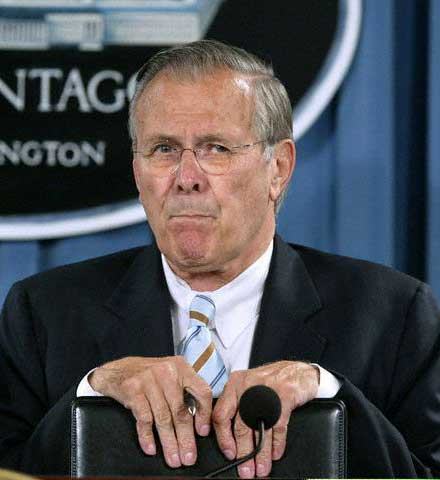
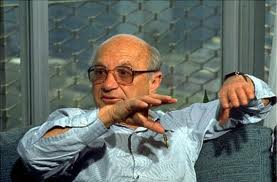

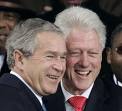
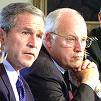
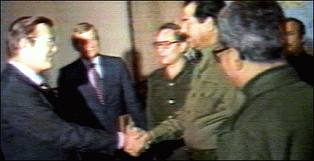
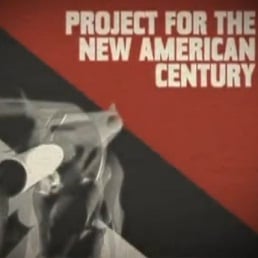
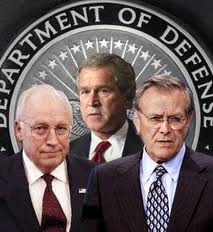

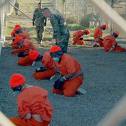
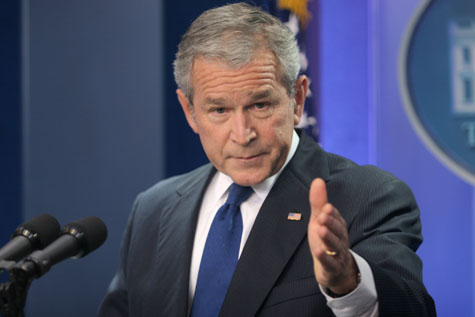
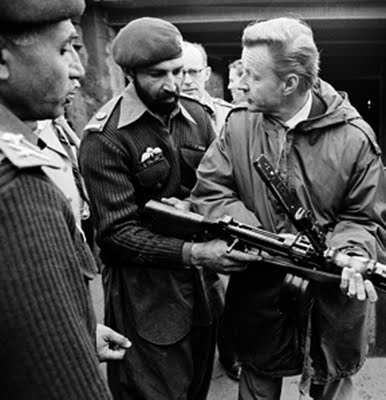
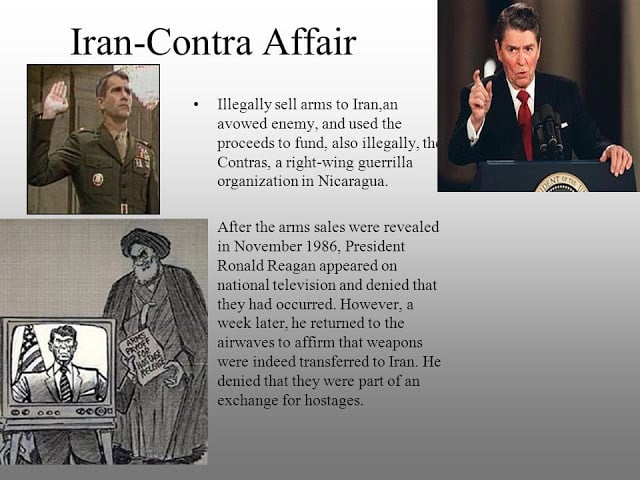
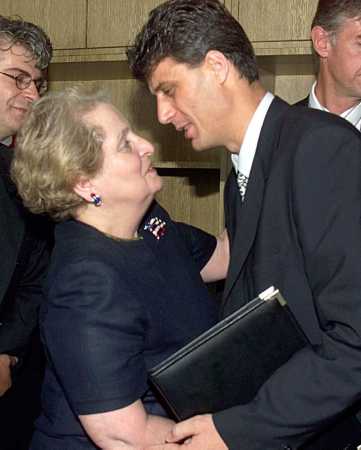
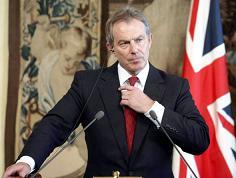
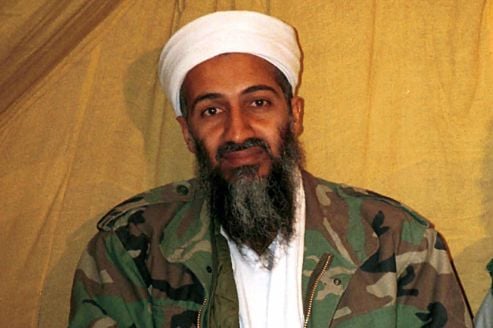








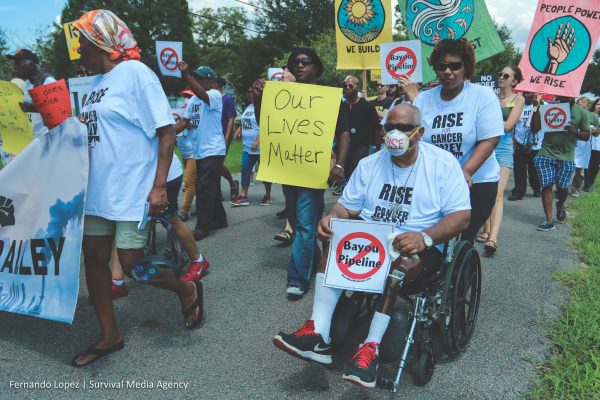


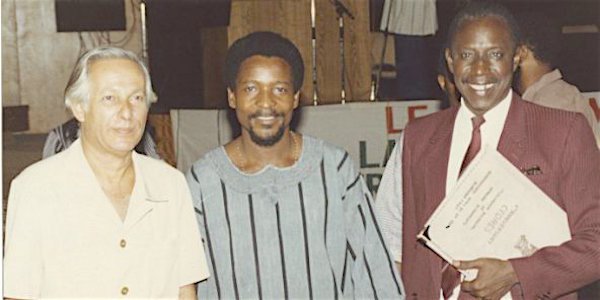
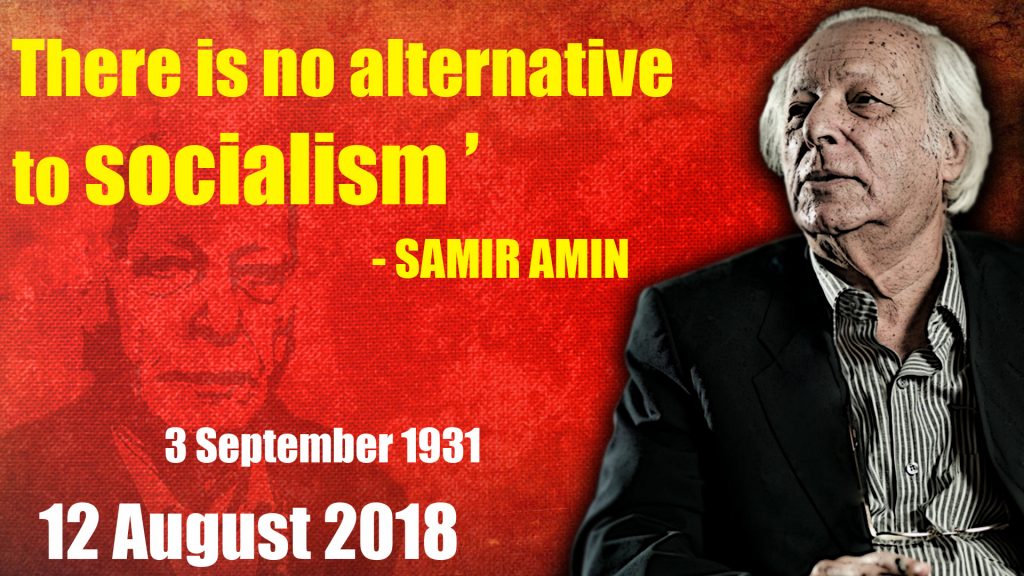











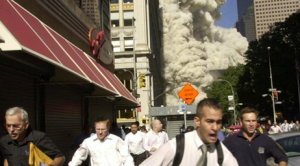




















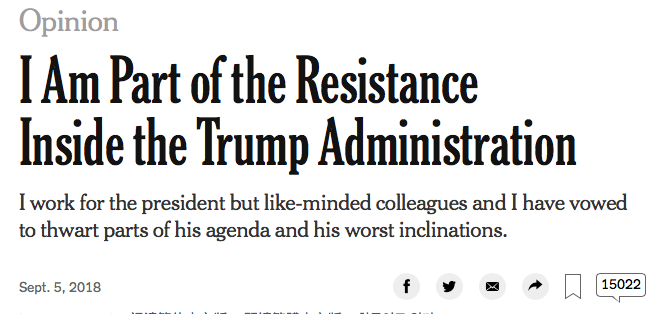

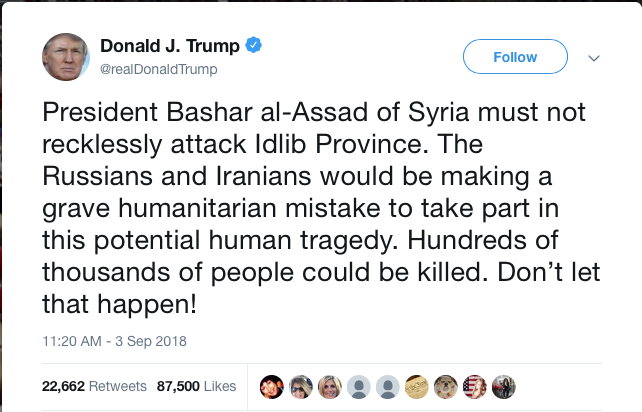
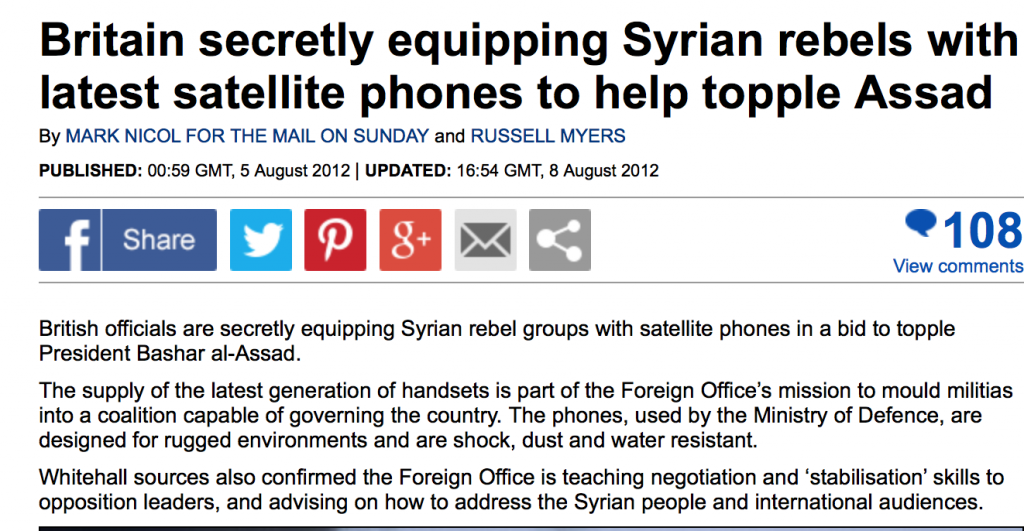

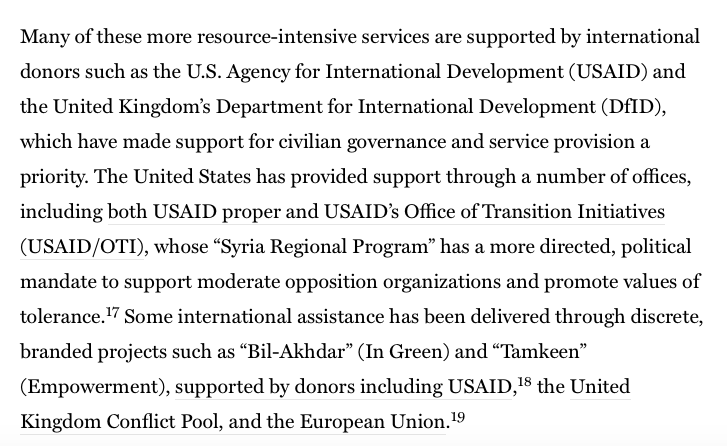
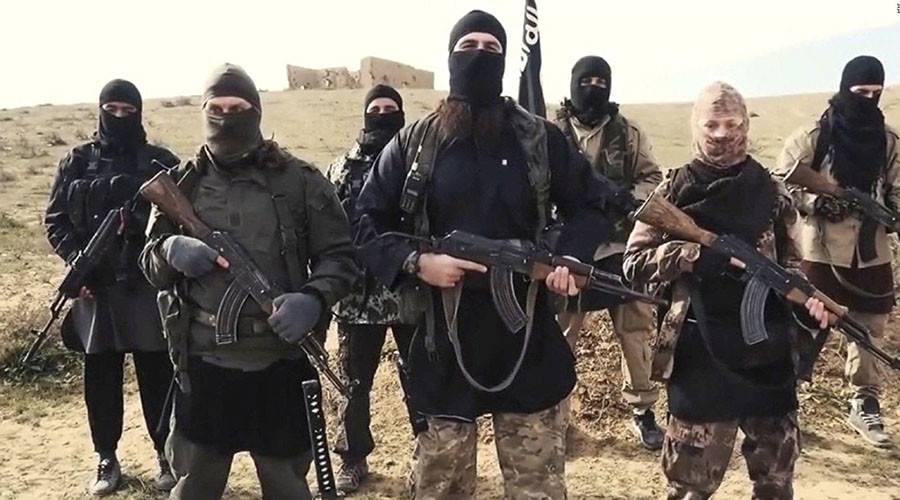 t’s anti-terrorism campaign, which consists in dismantling the Al Qaeda terror stronghold and restoring civilian government.
t’s anti-terrorism campaign, which consists in dismantling the Al Qaeda terror stronghold and restoring civilian government. 



